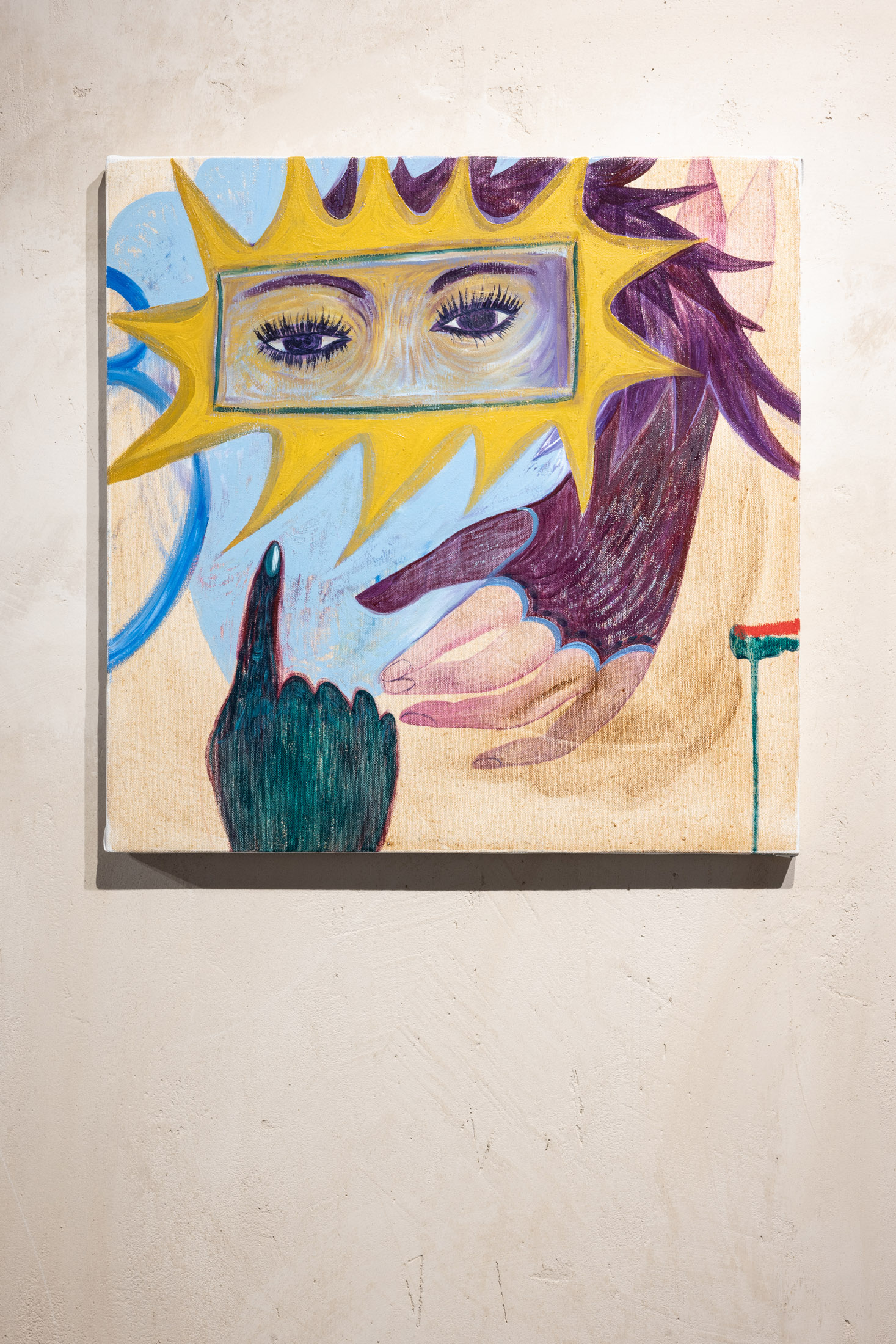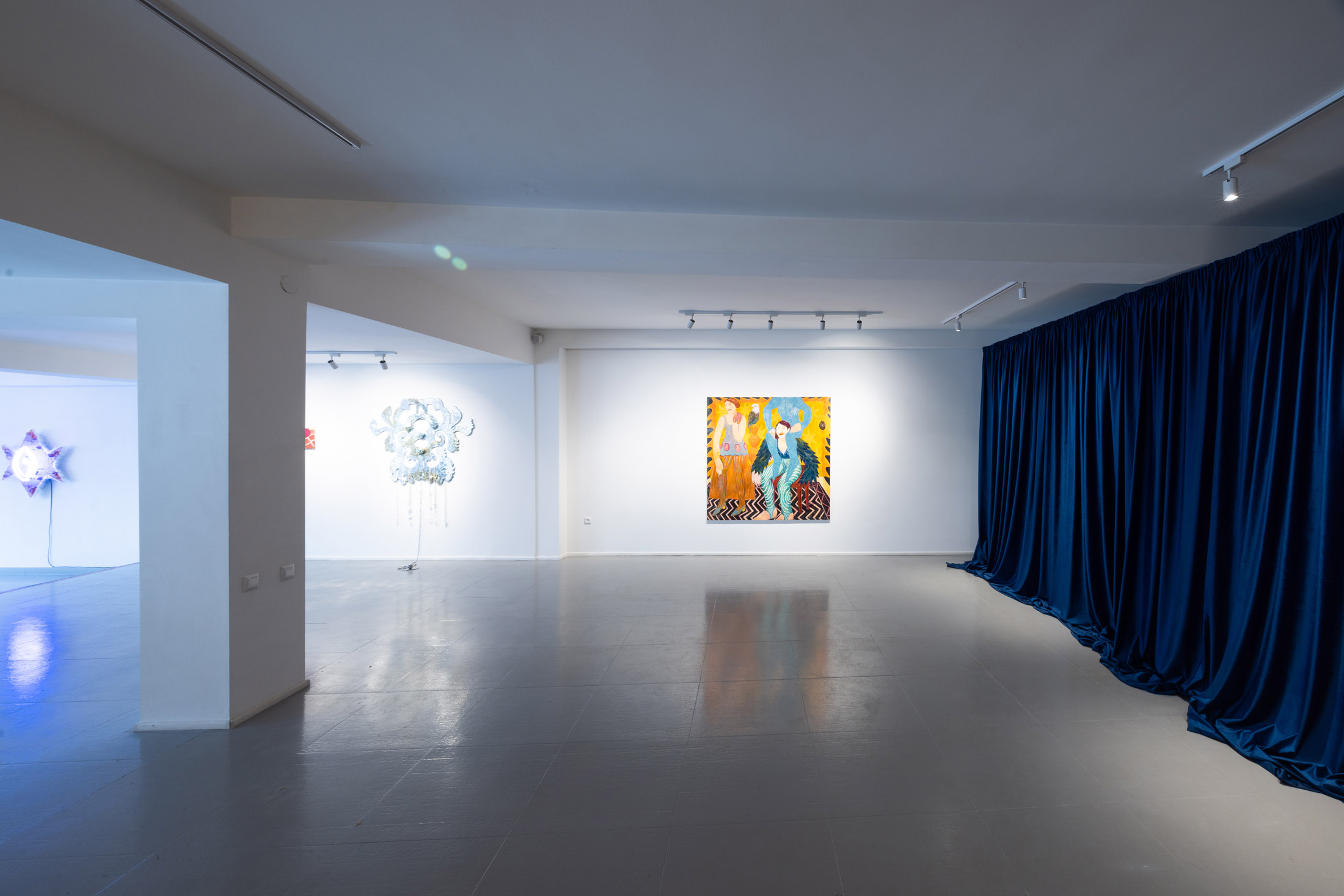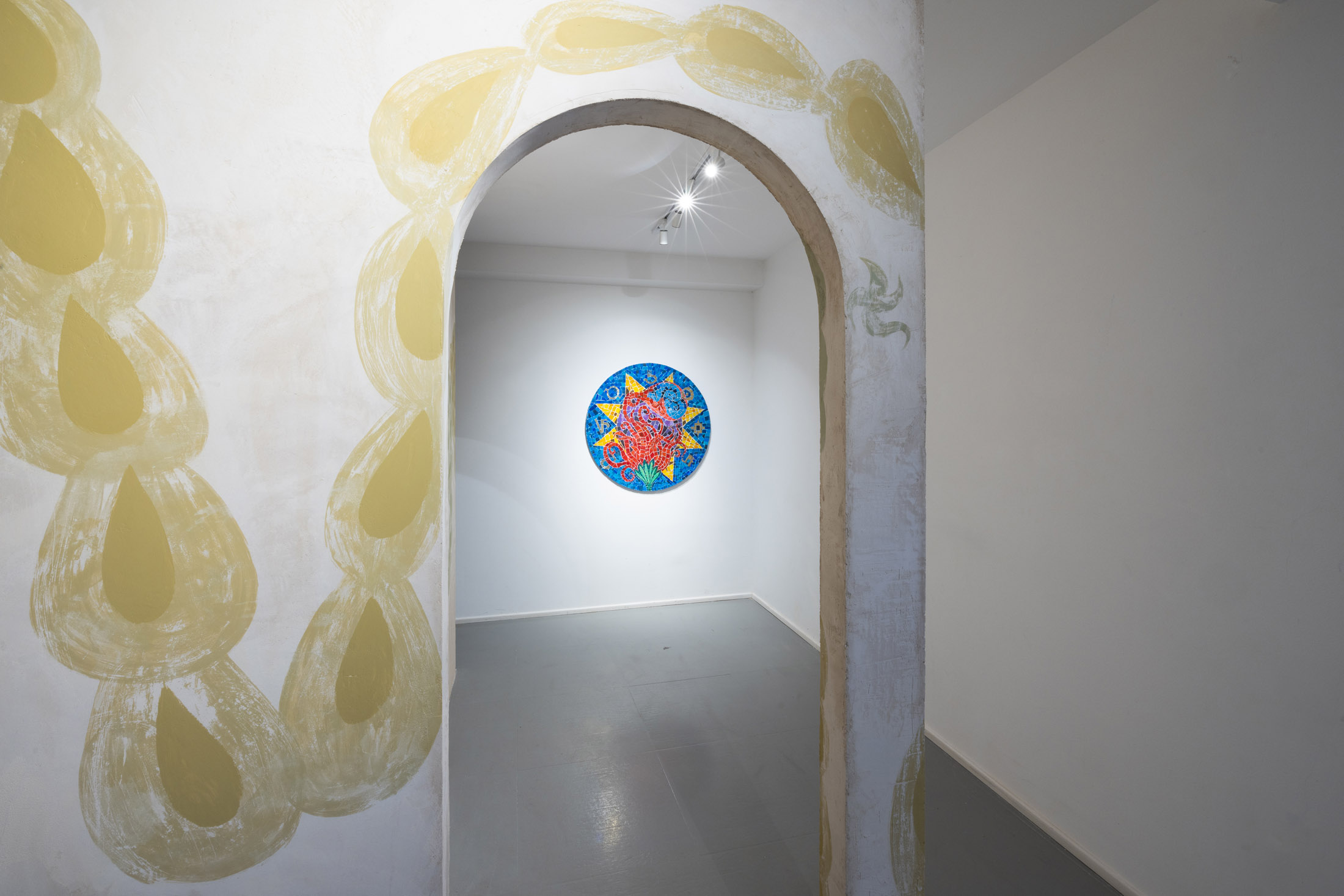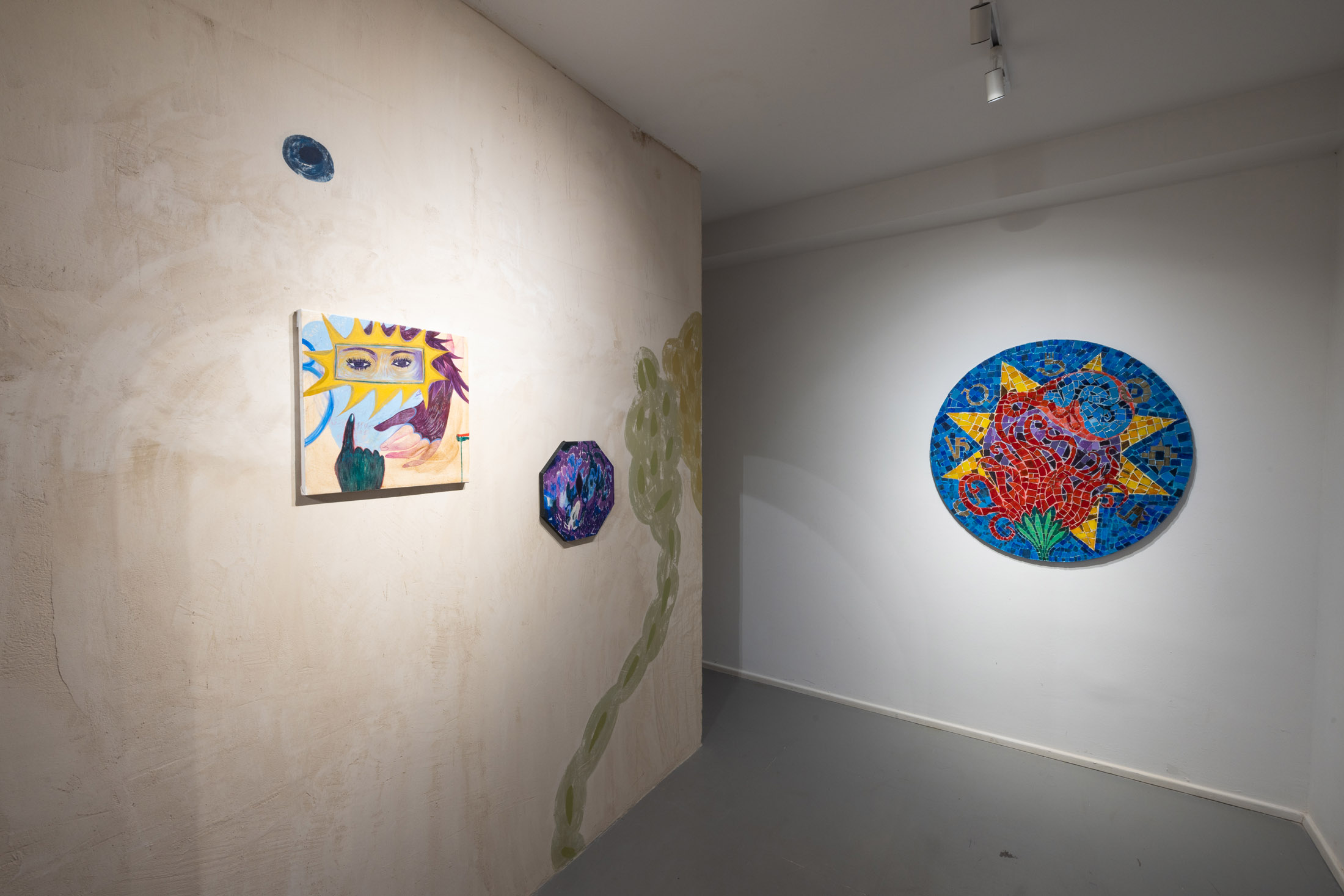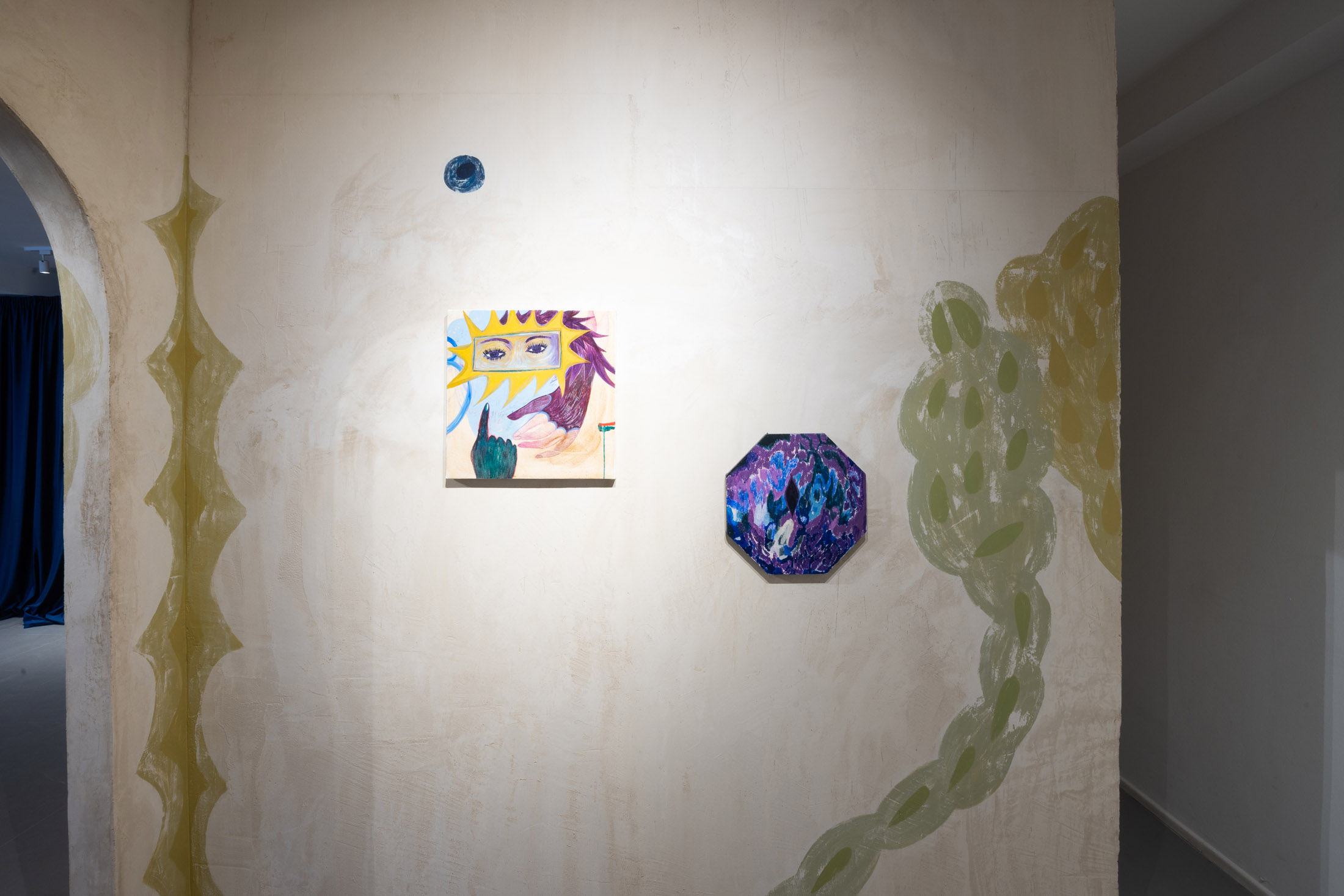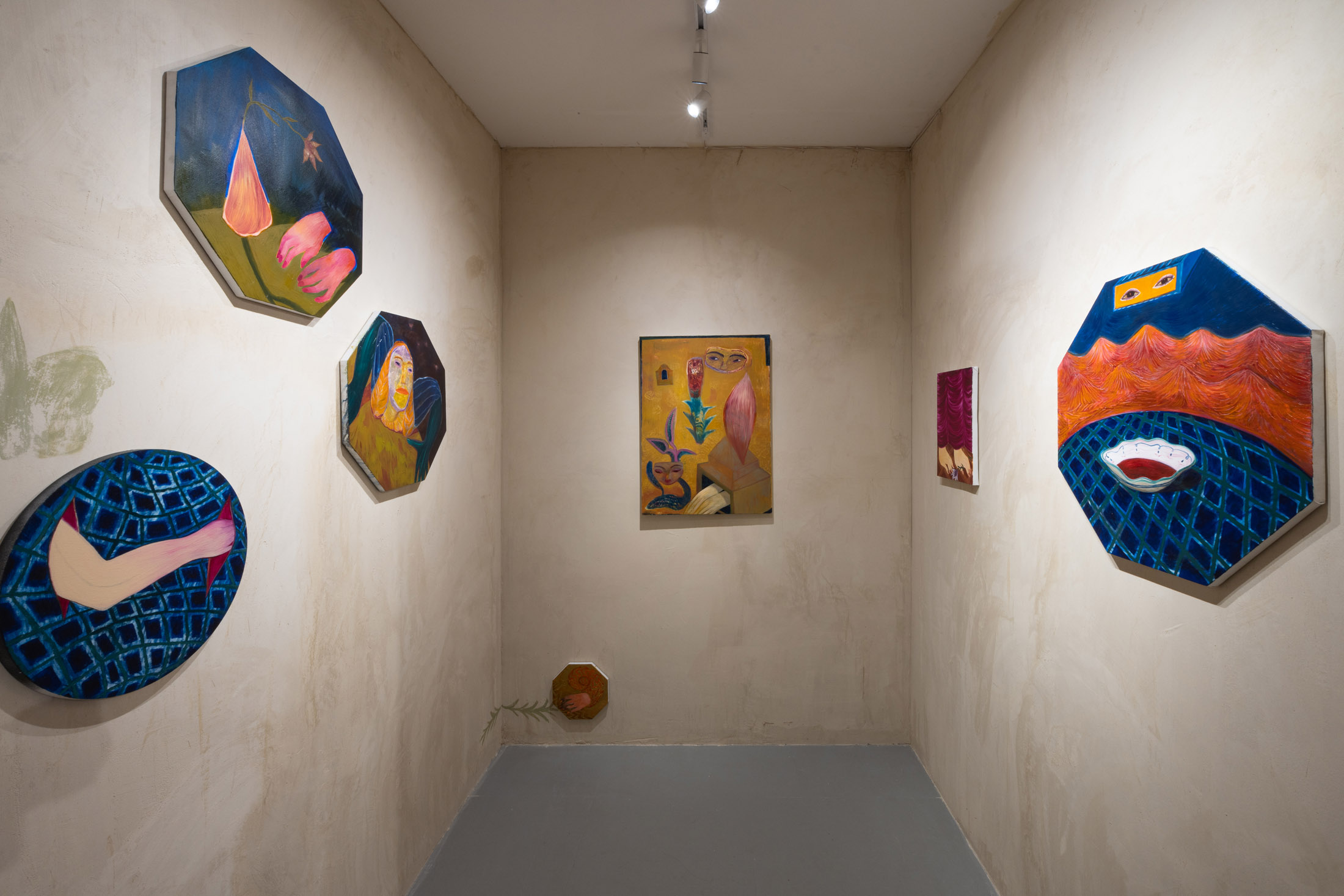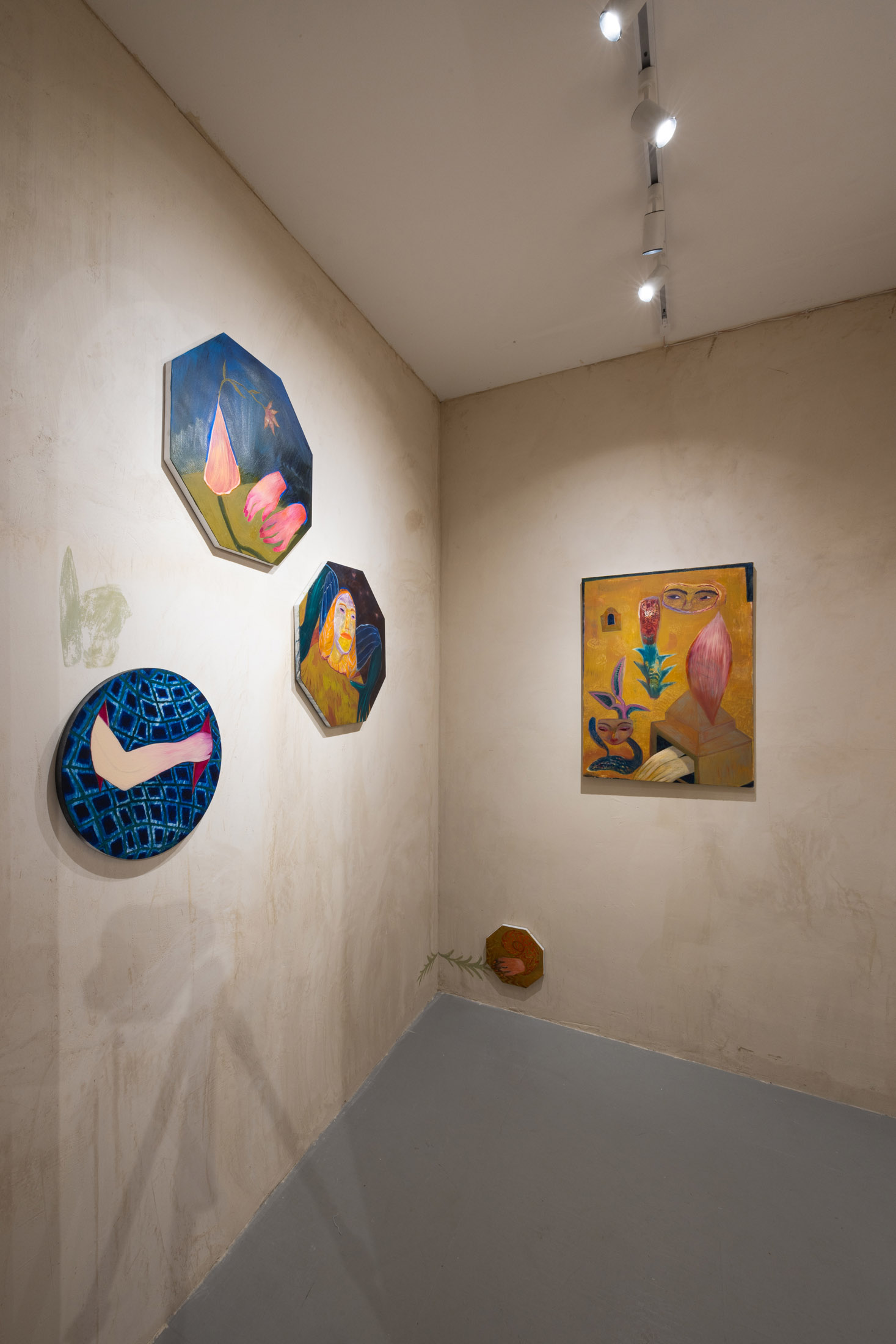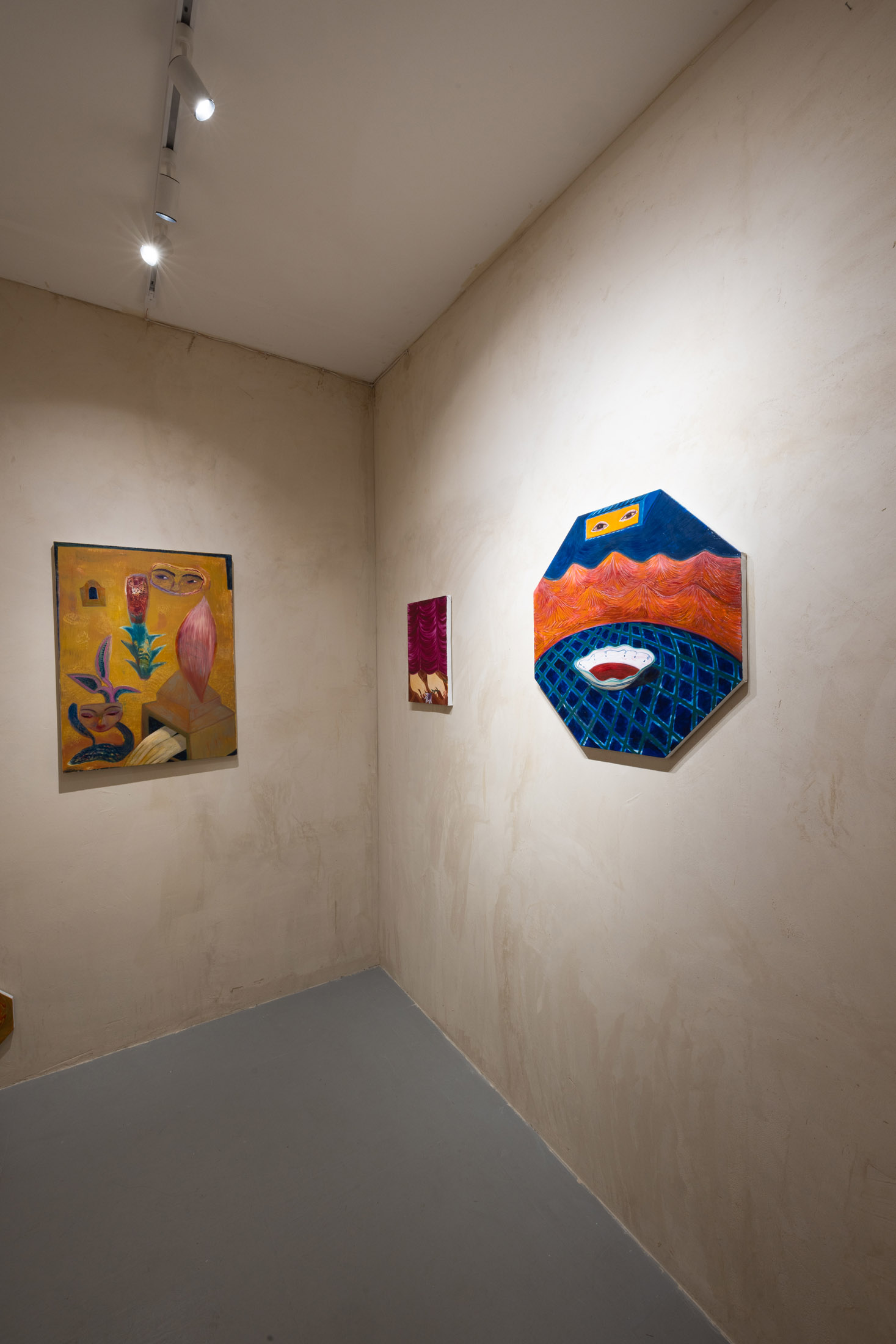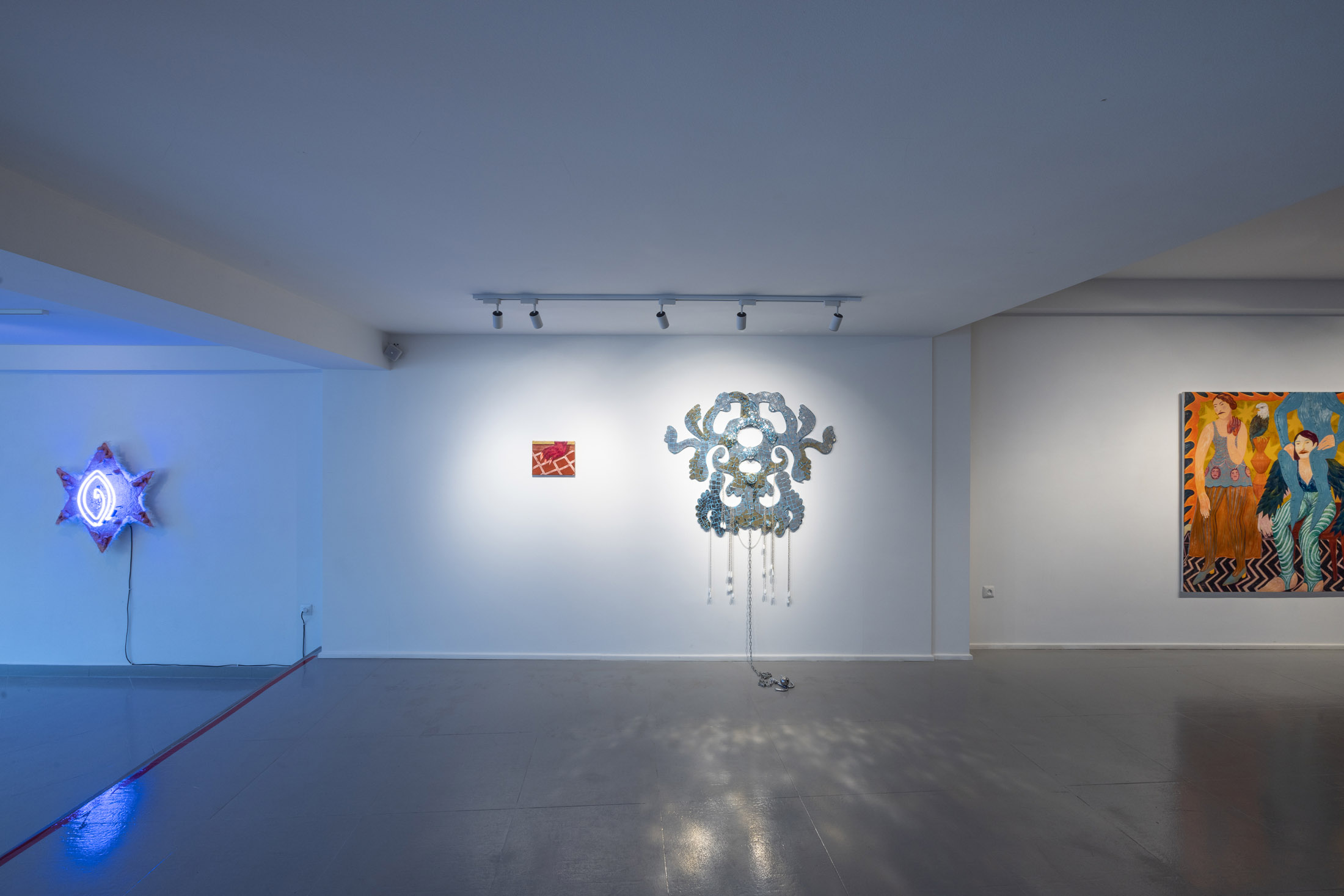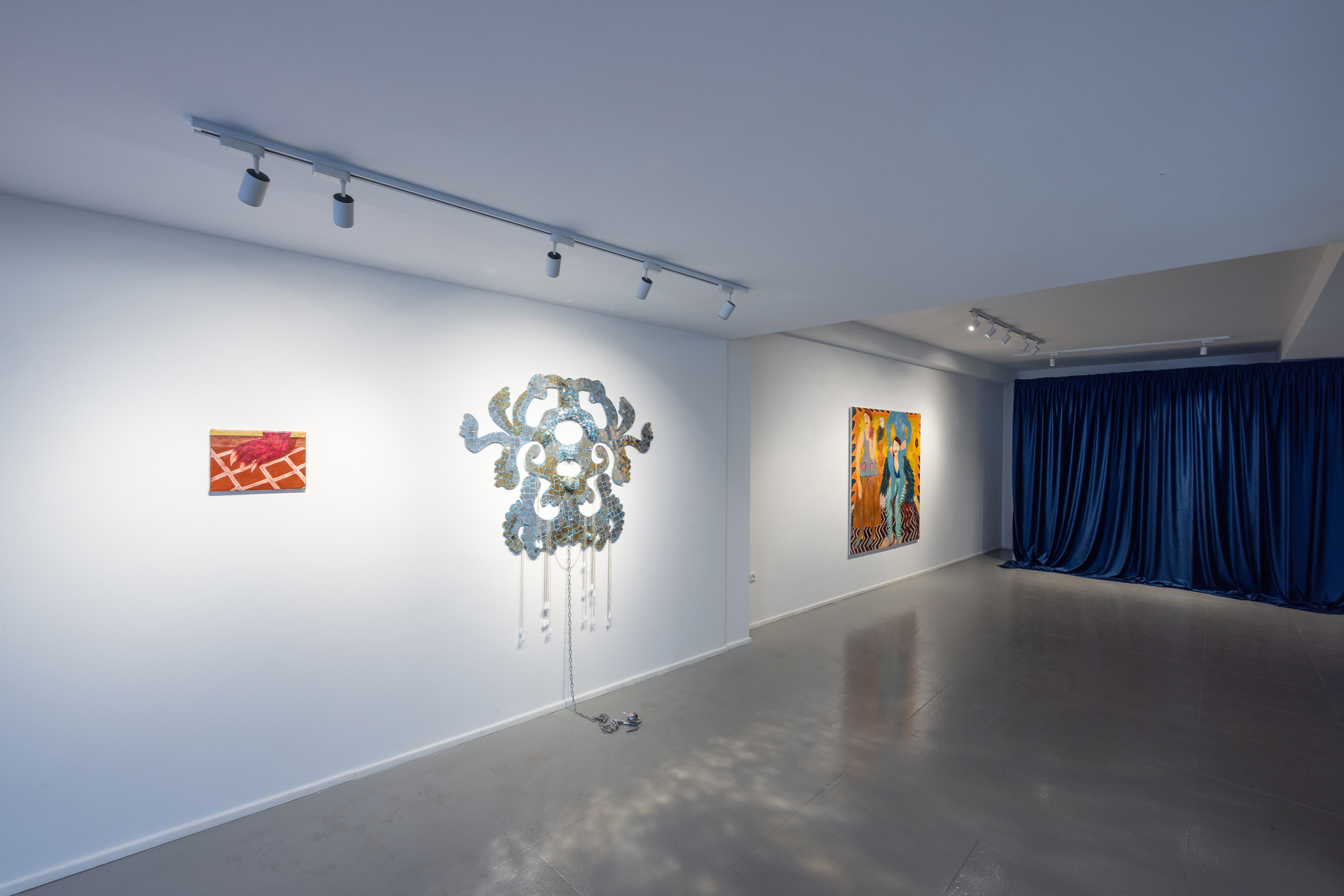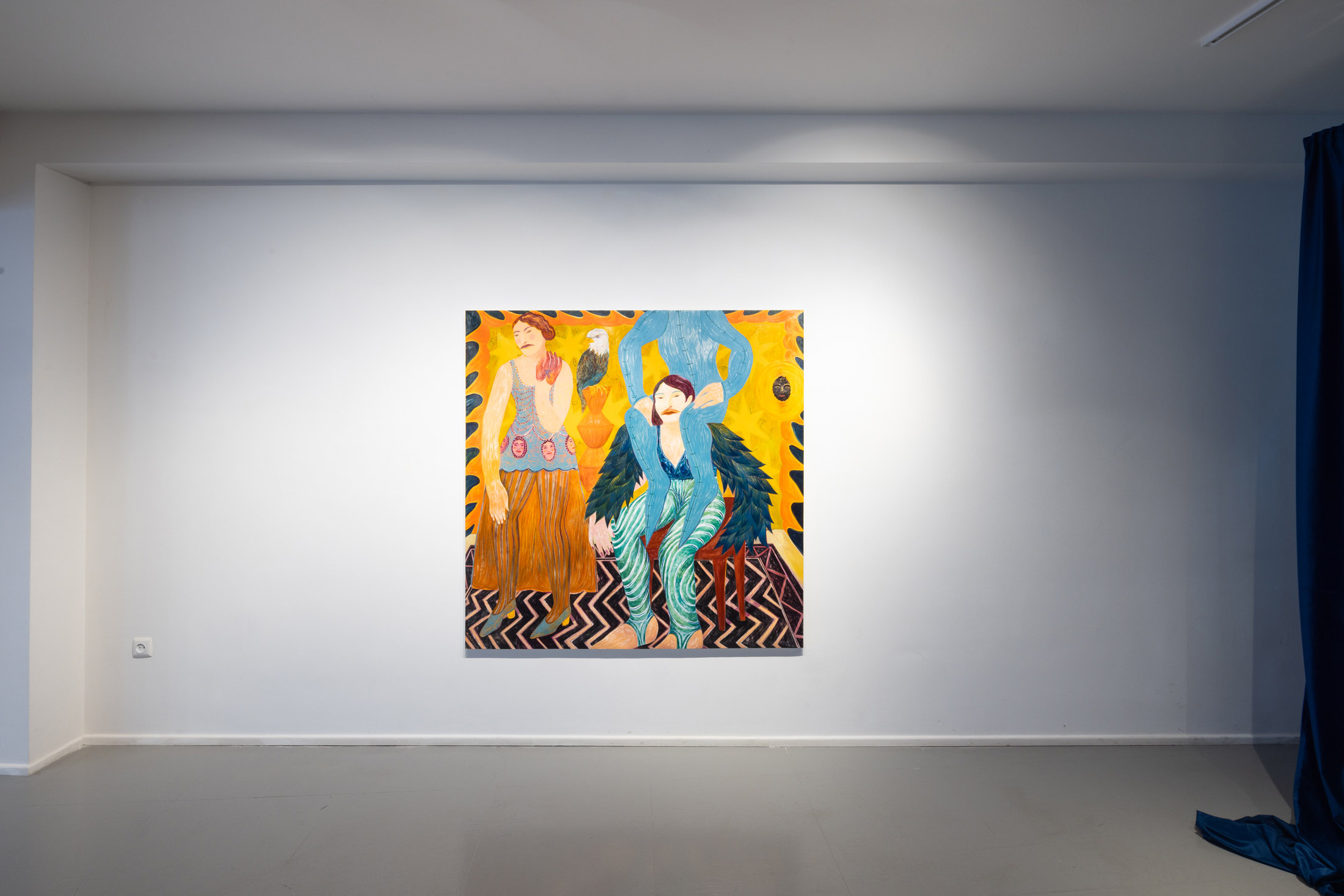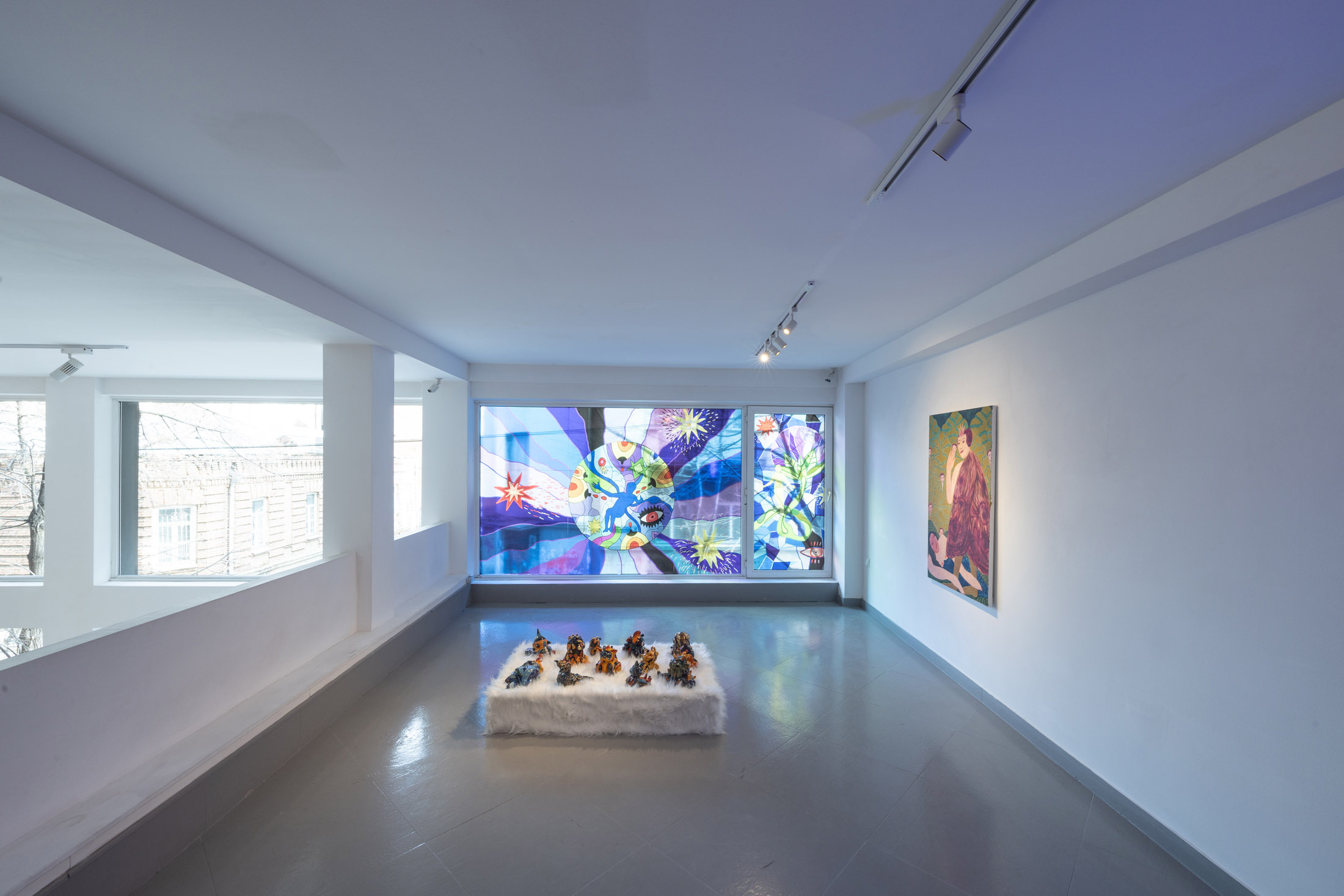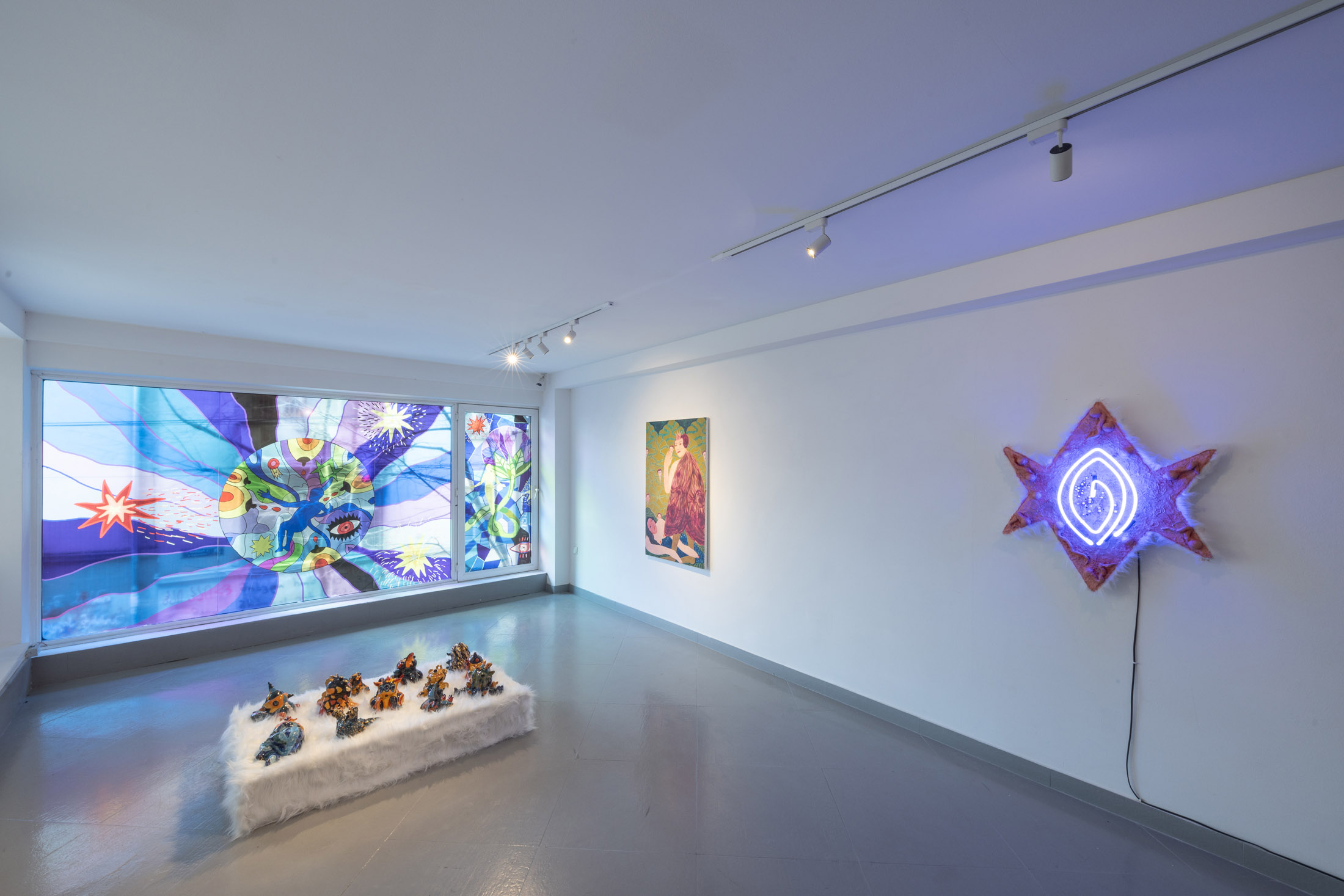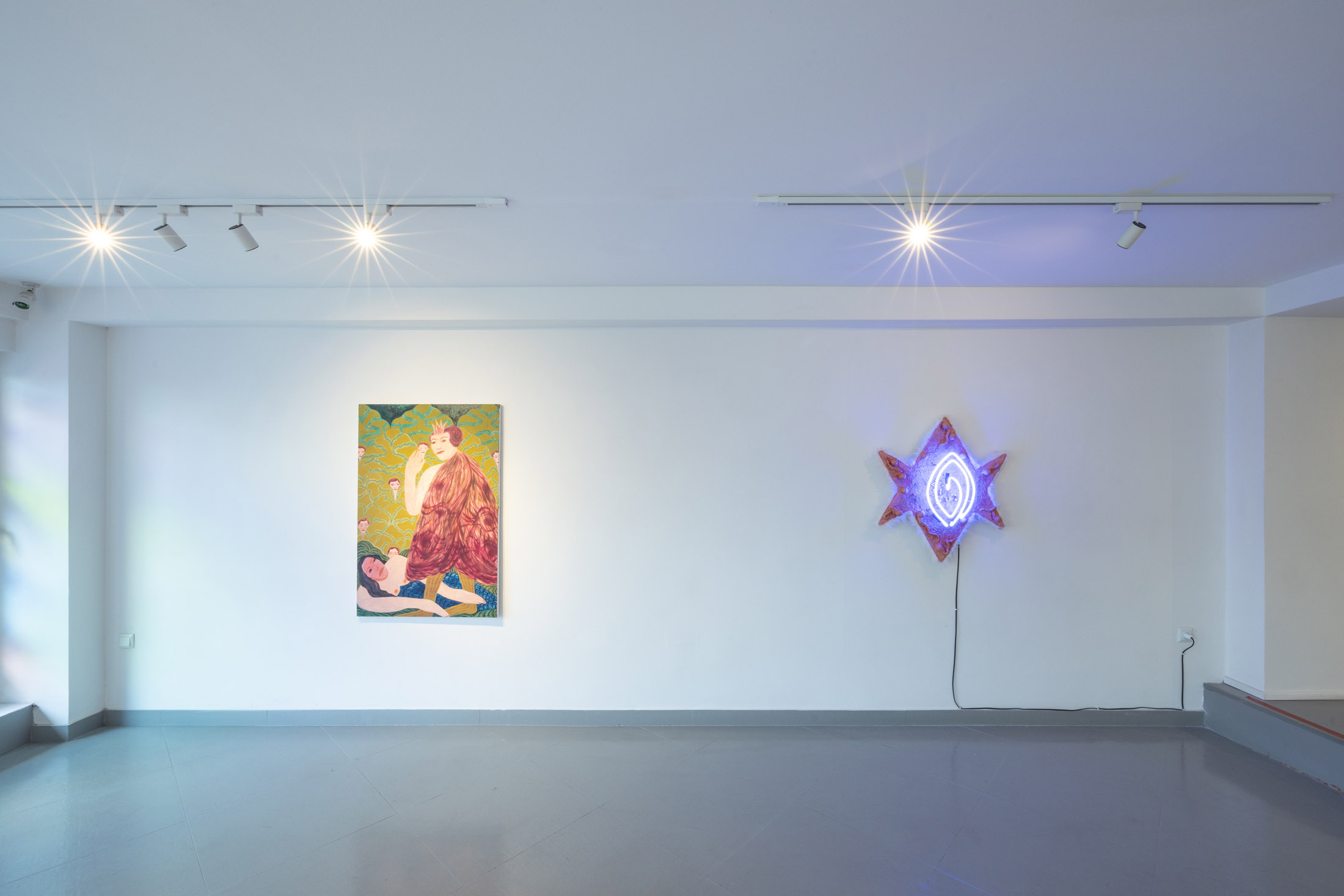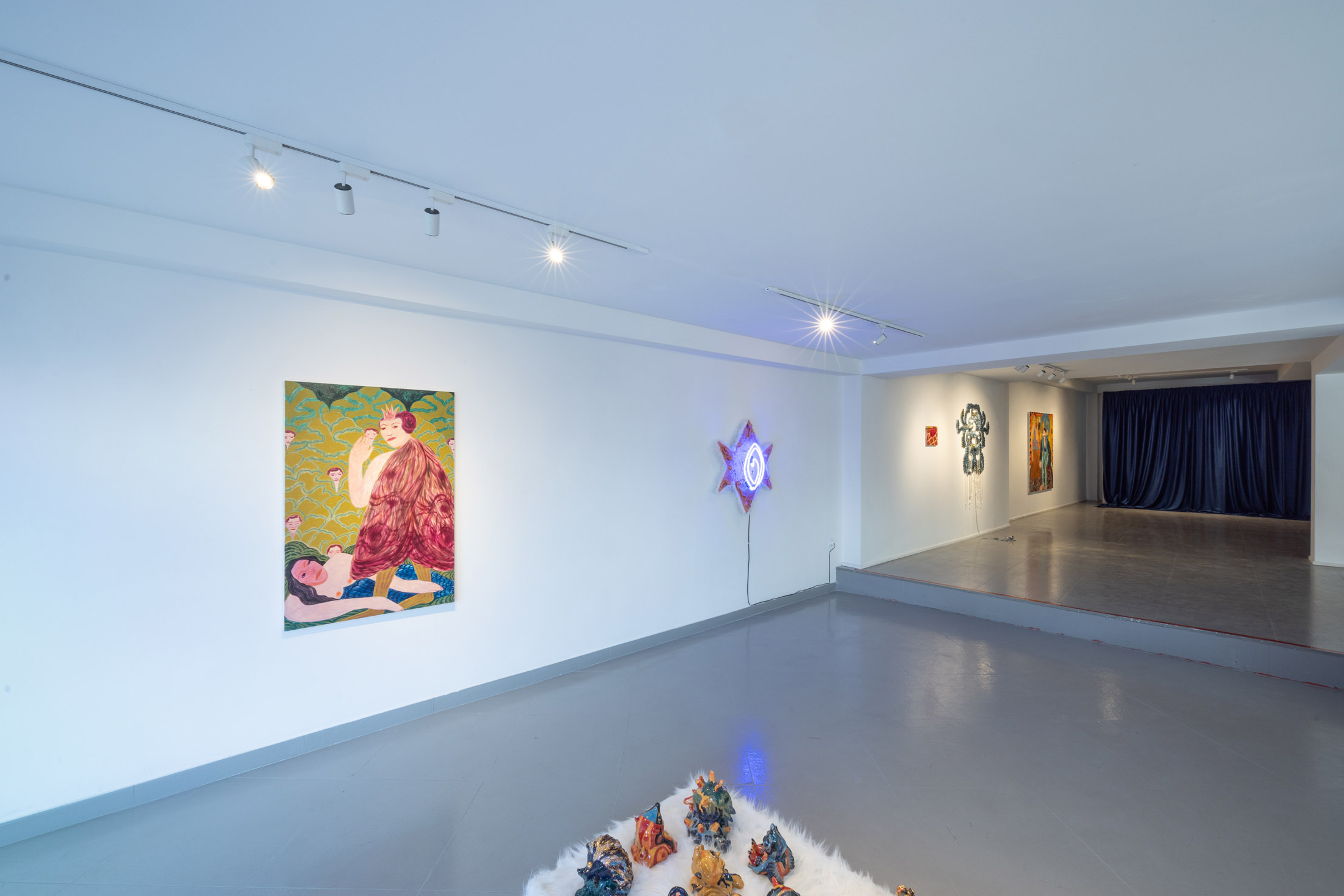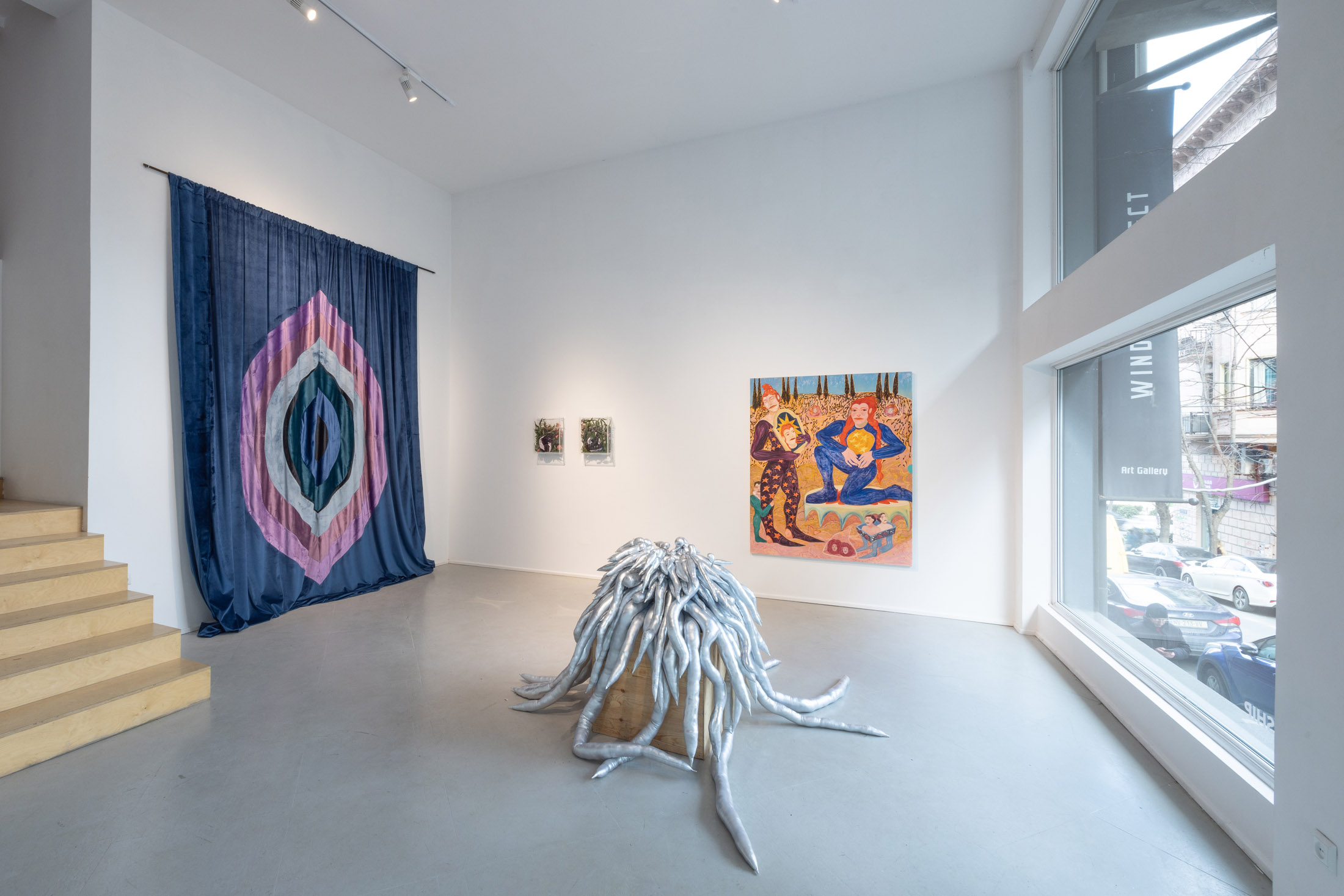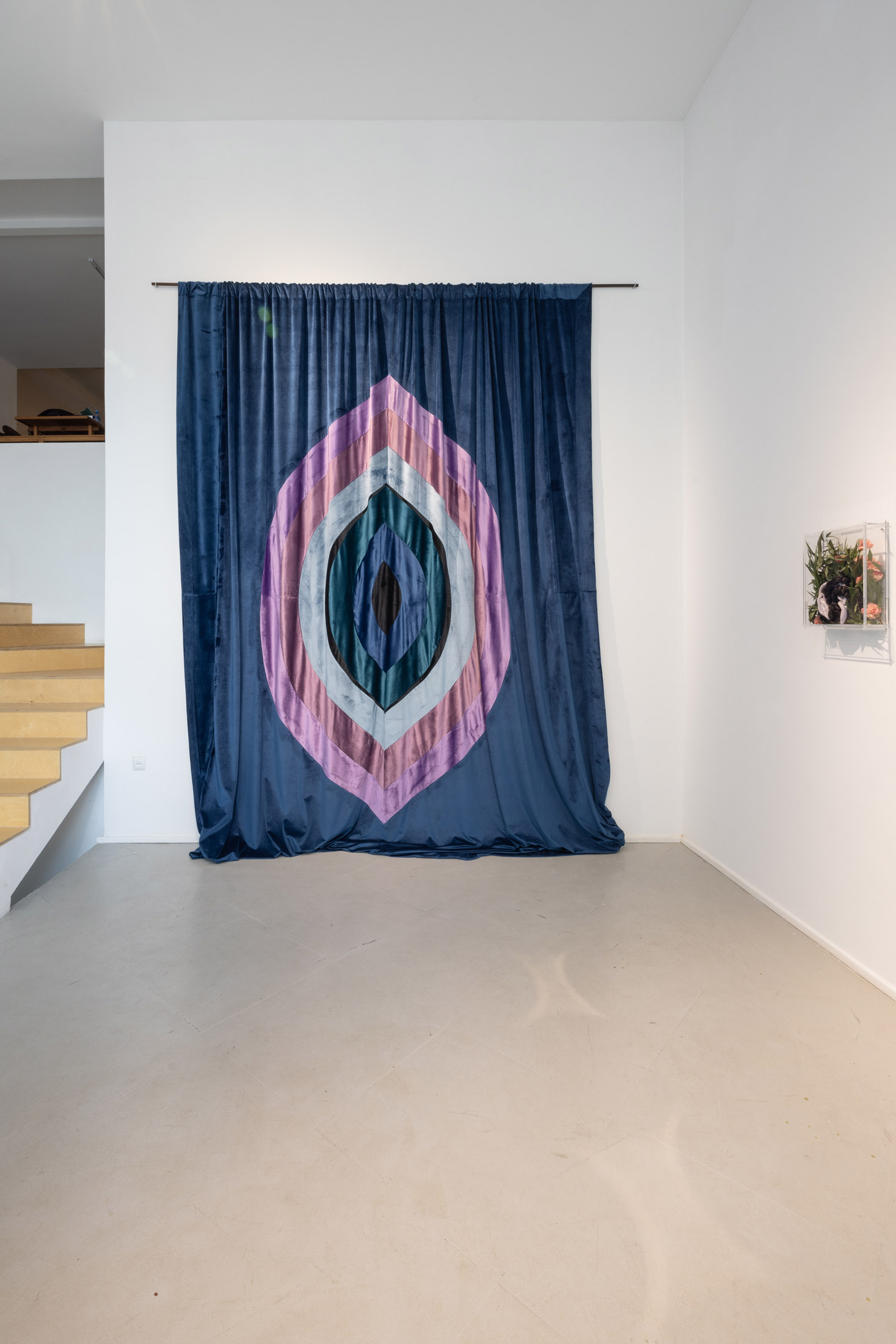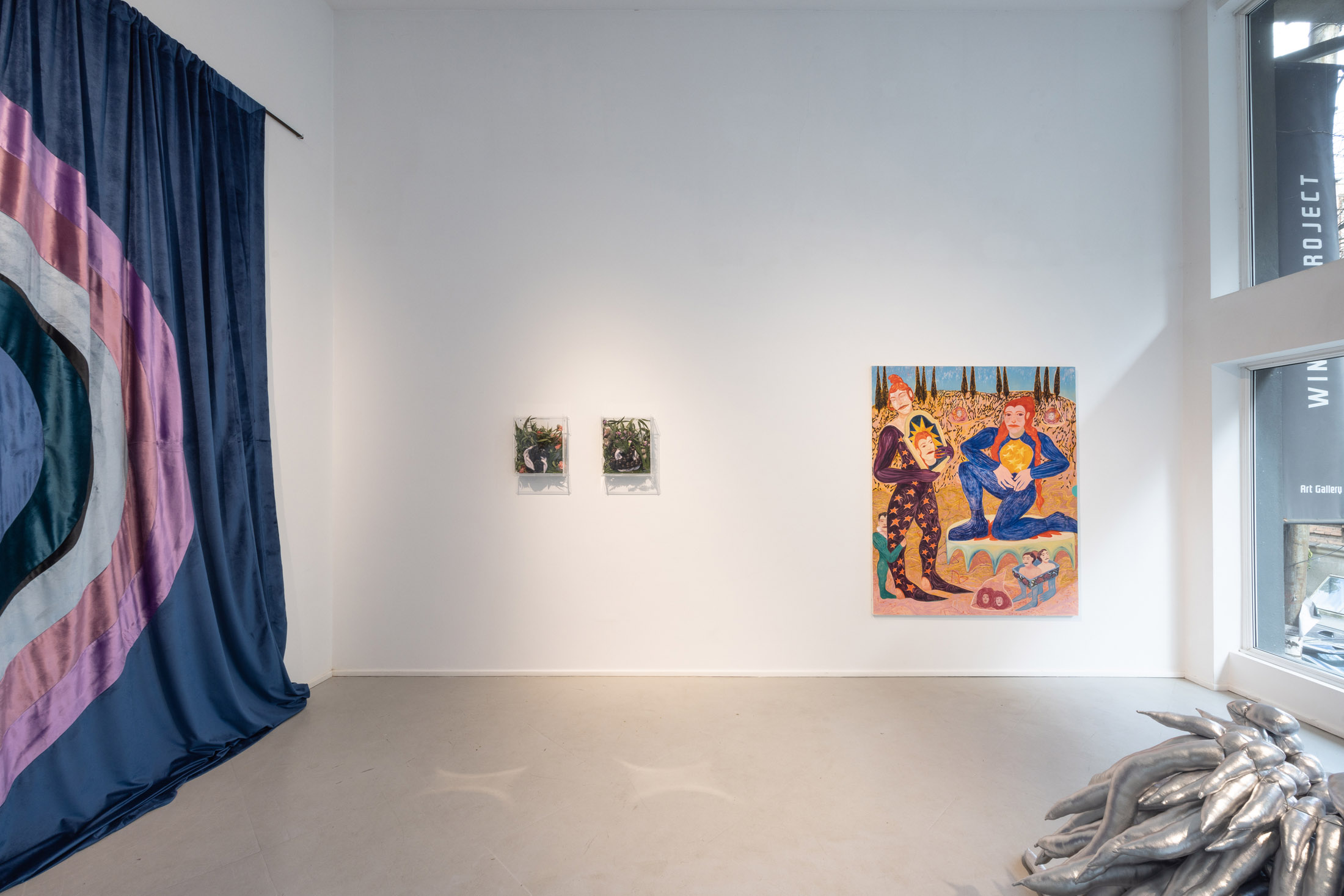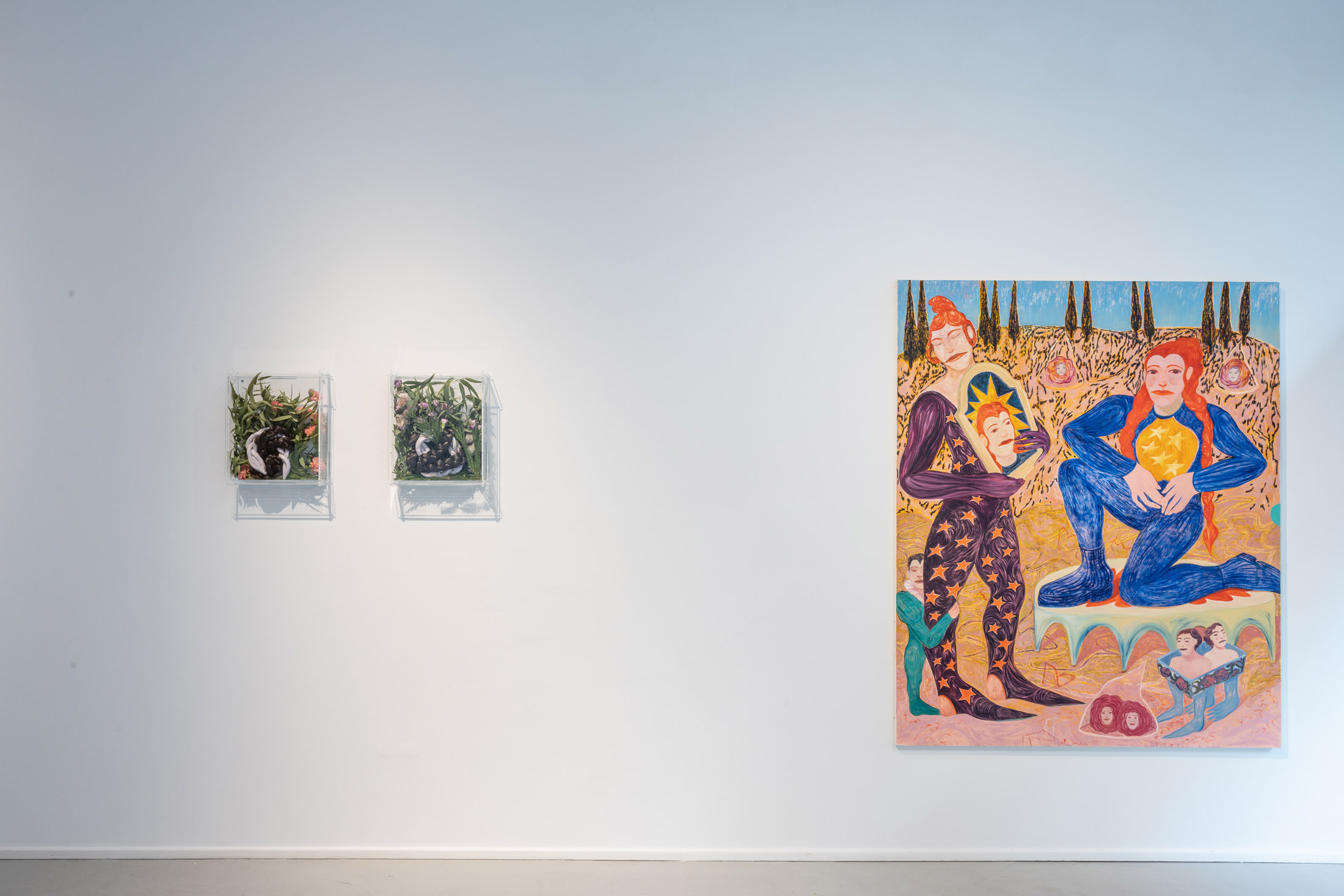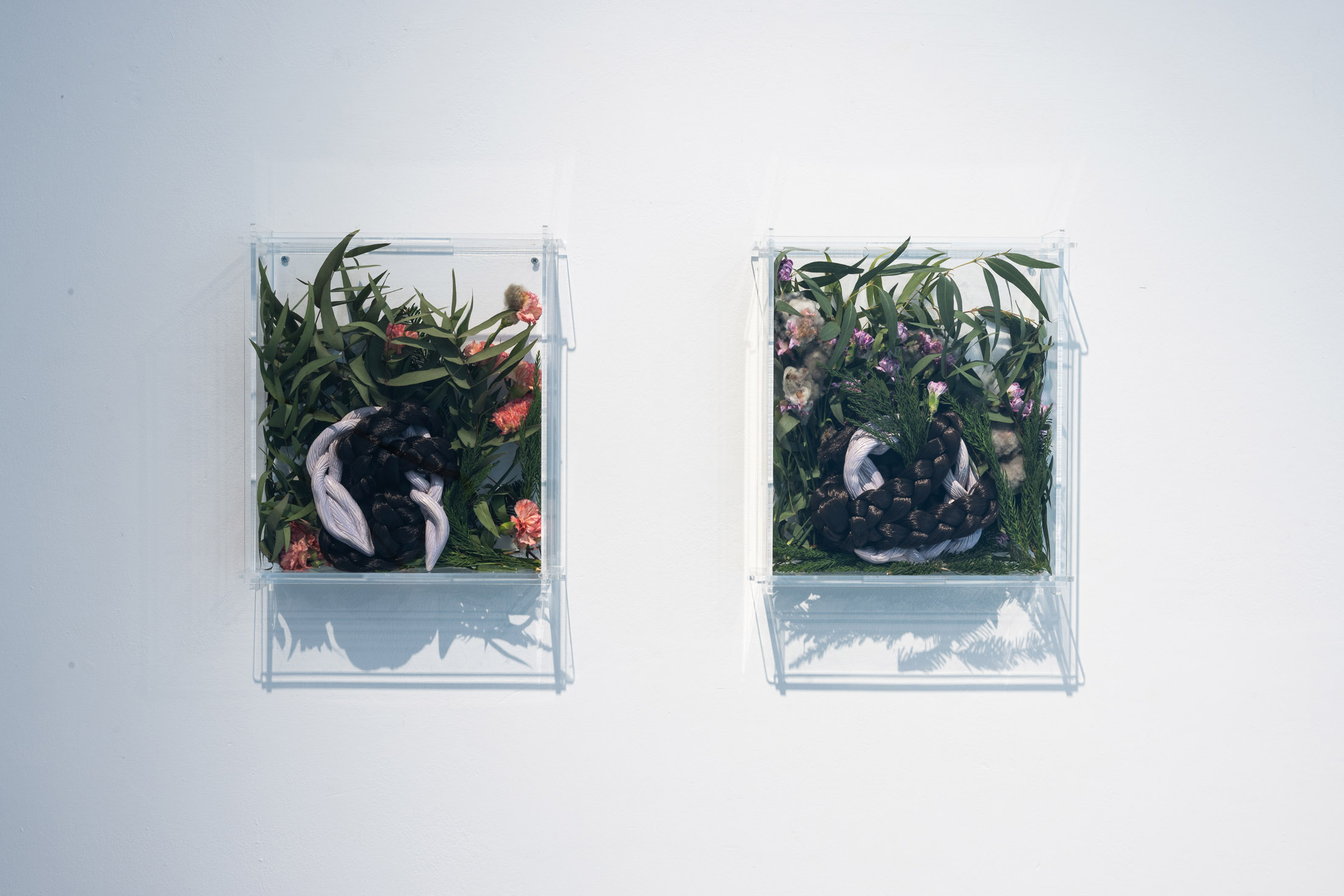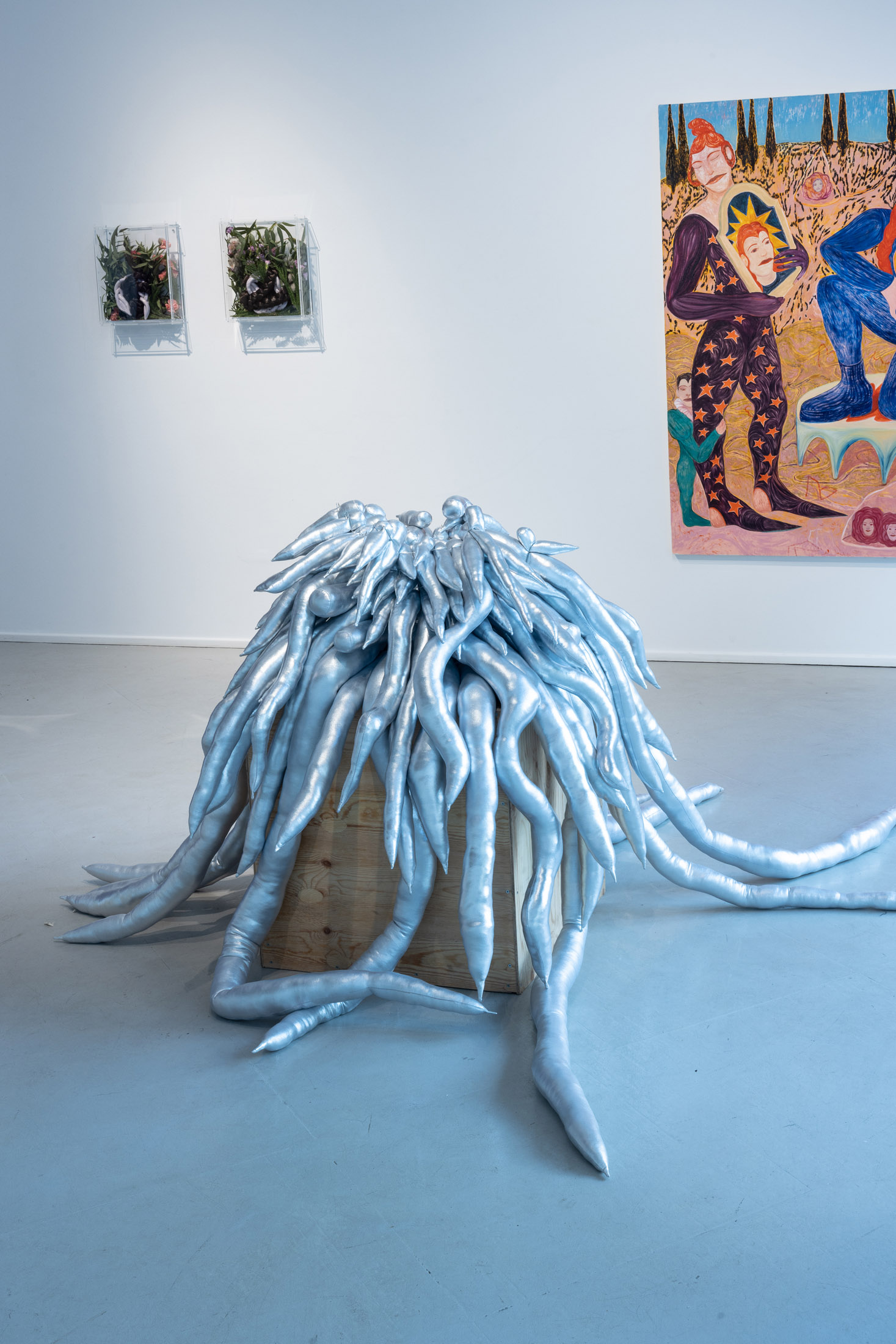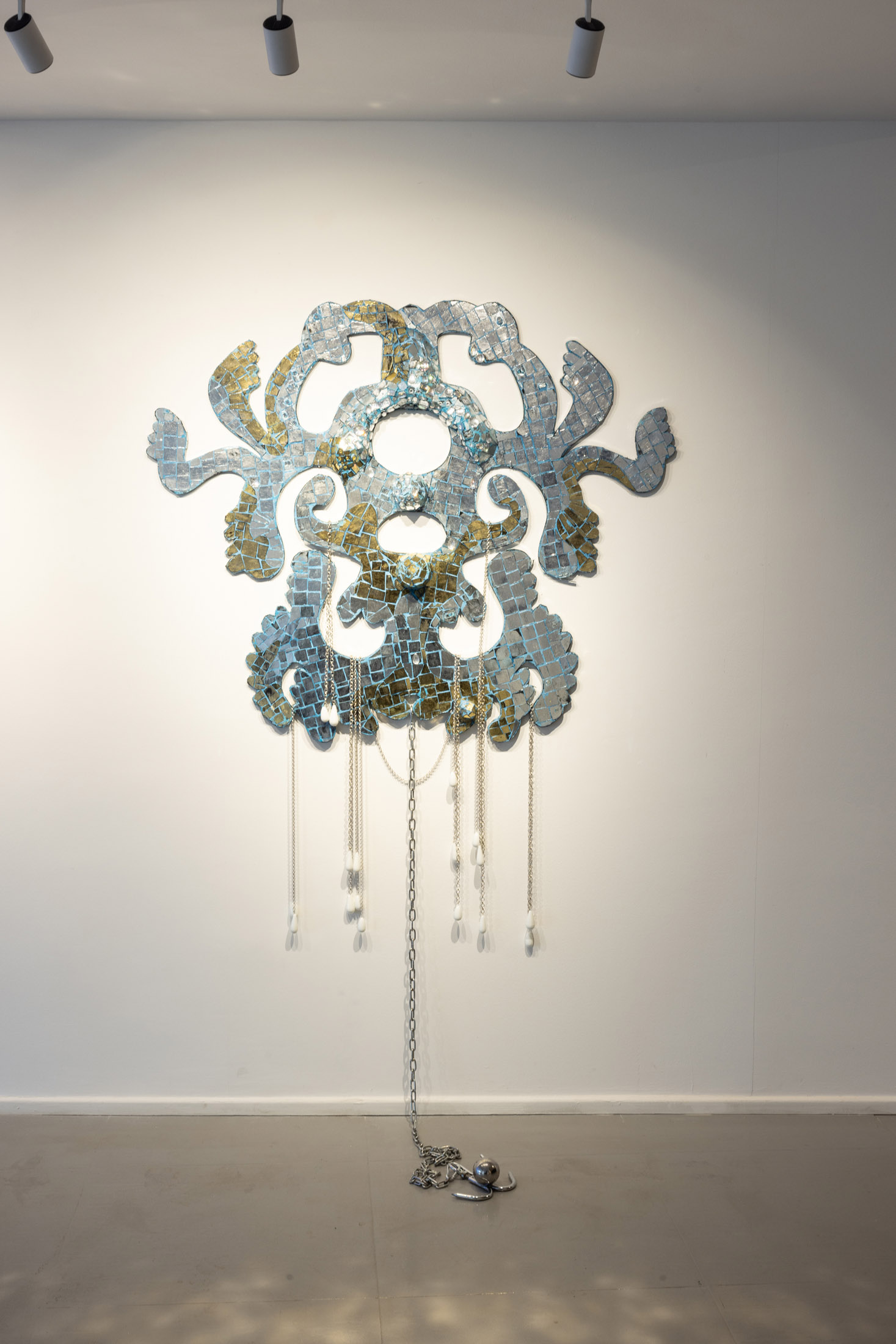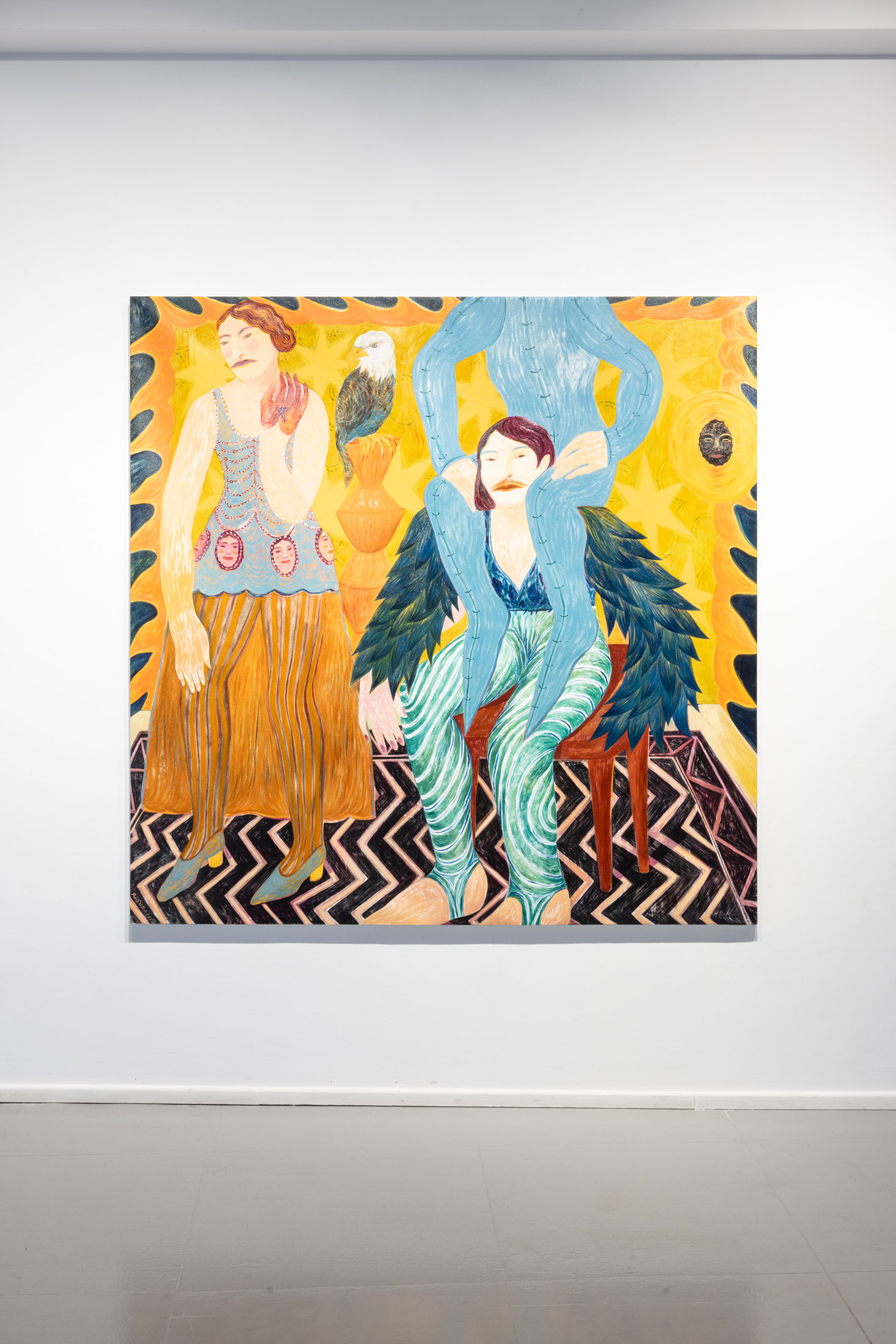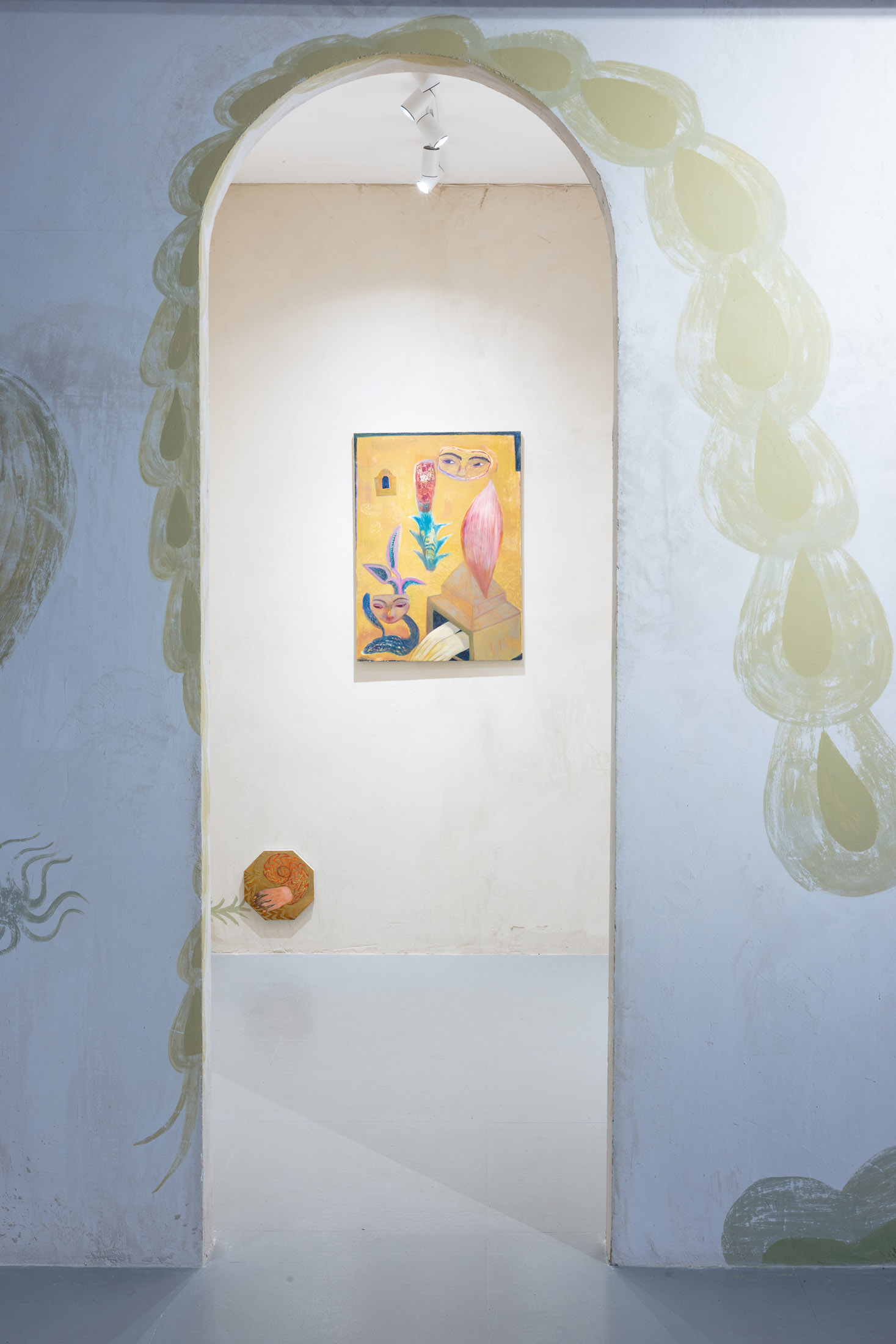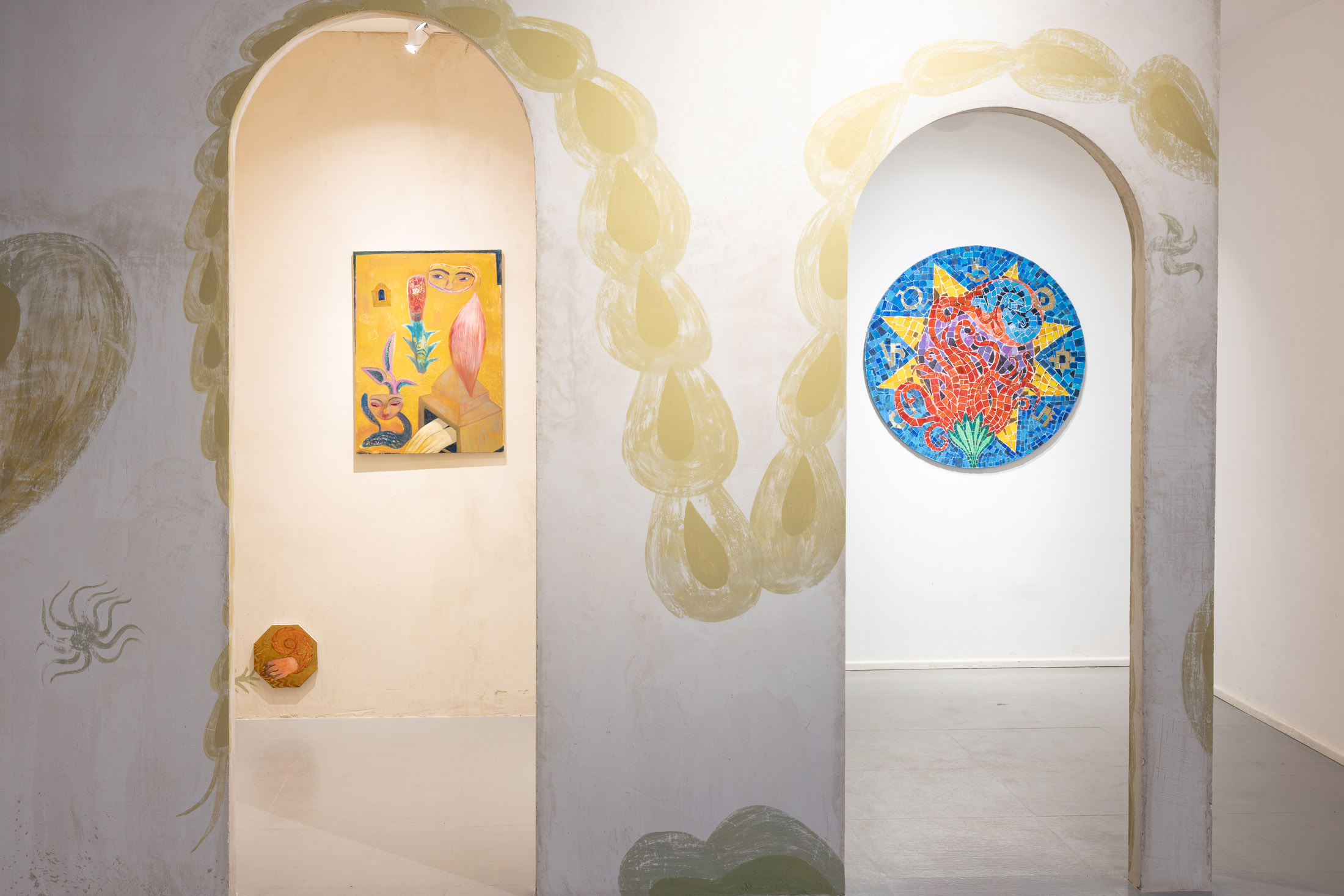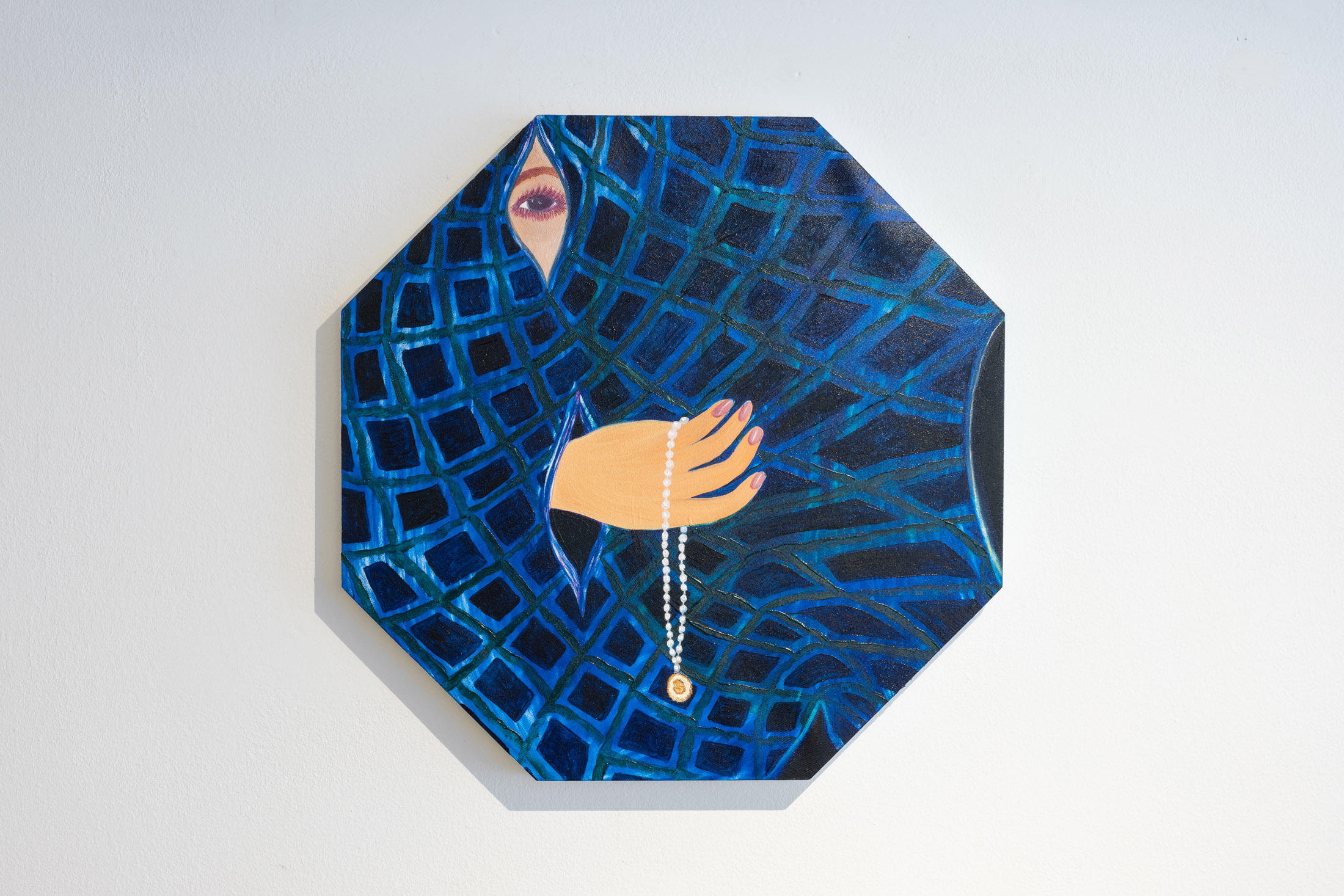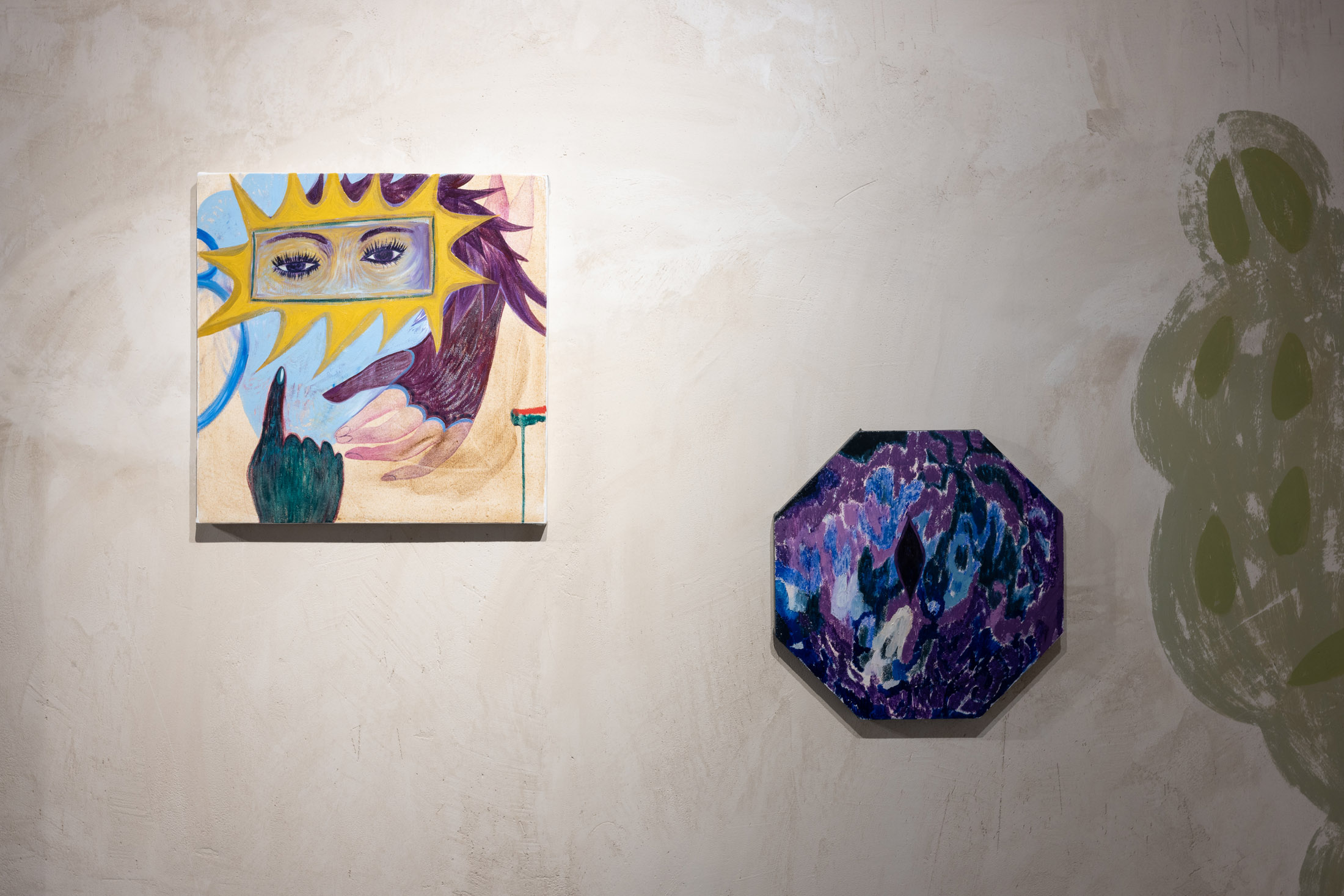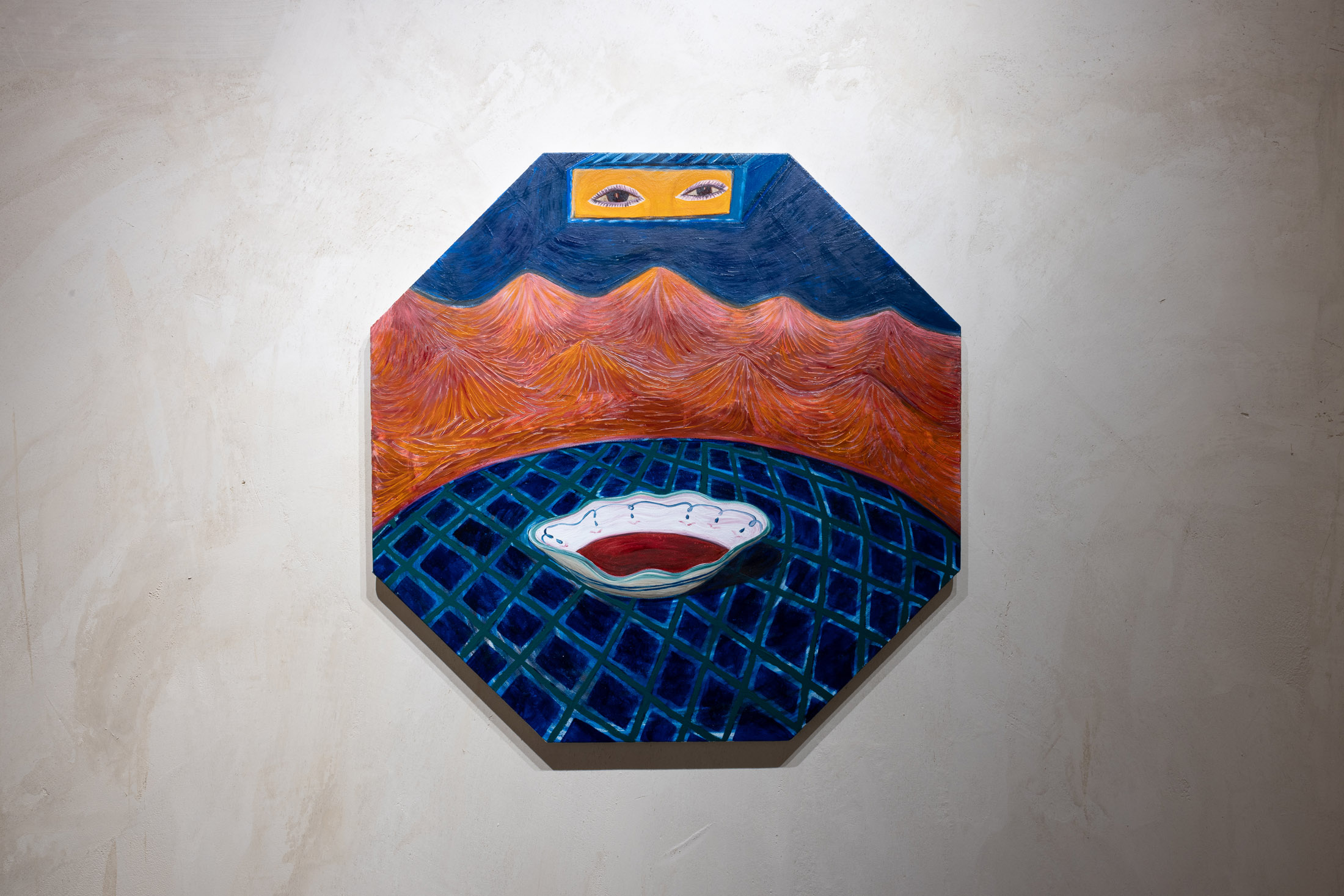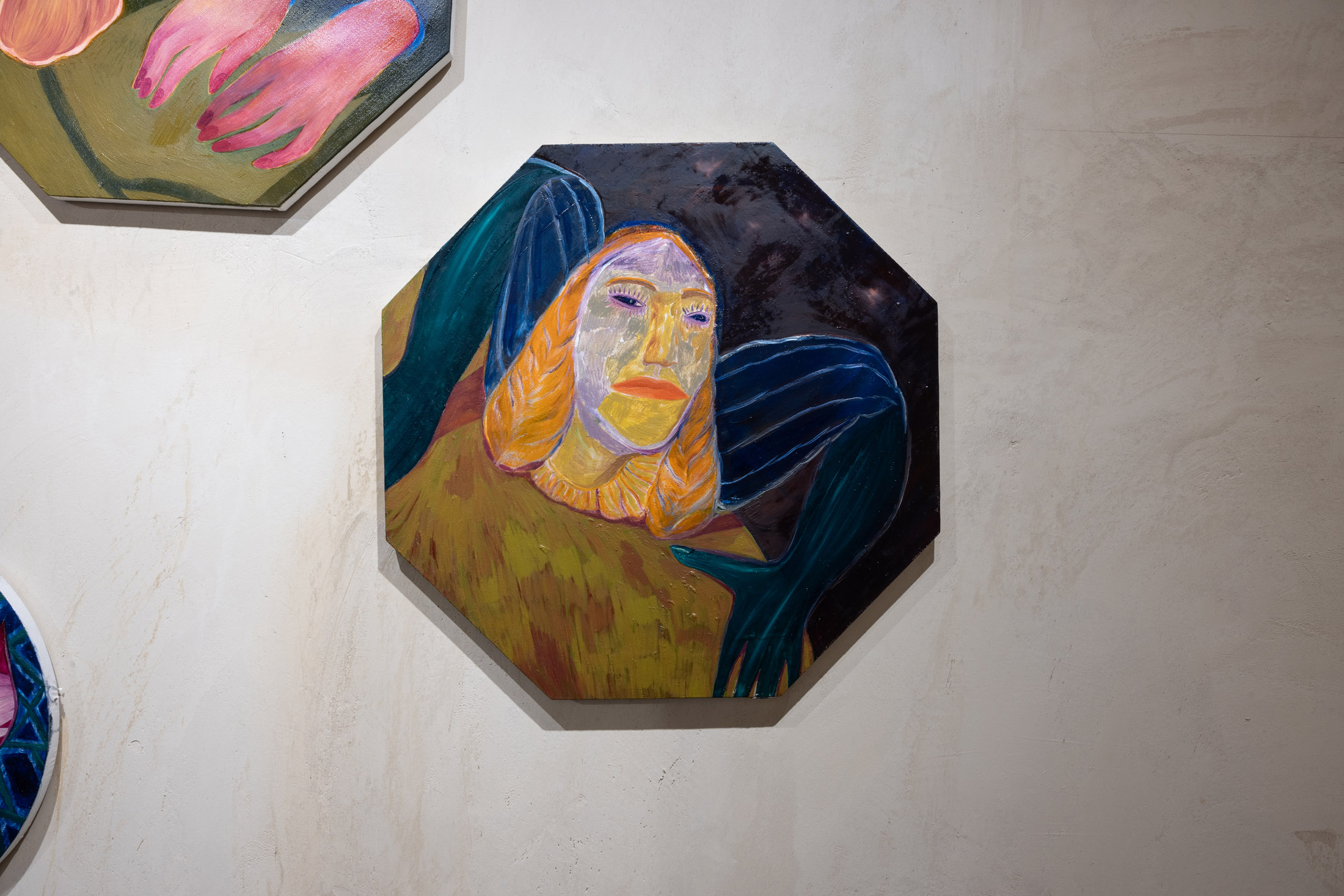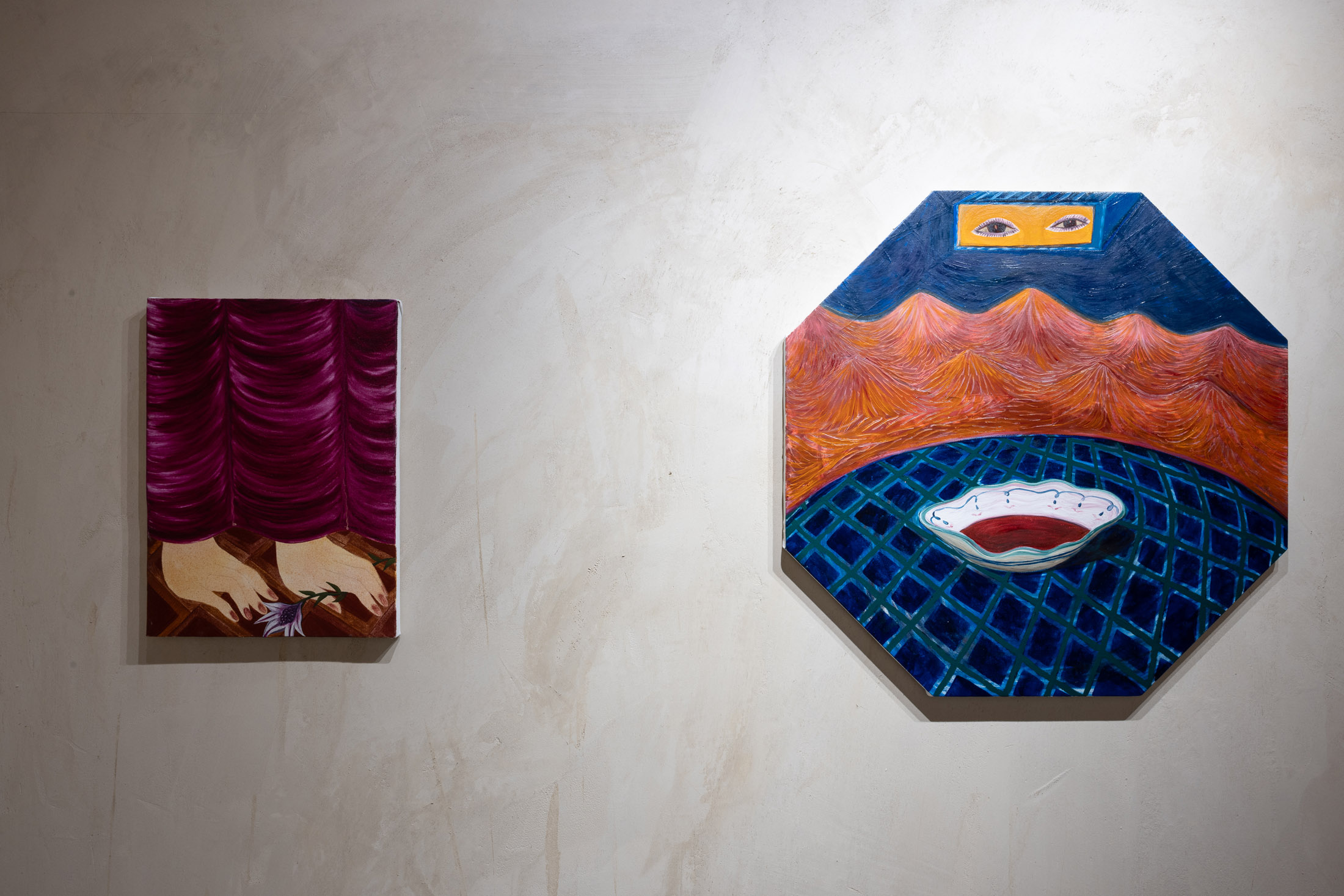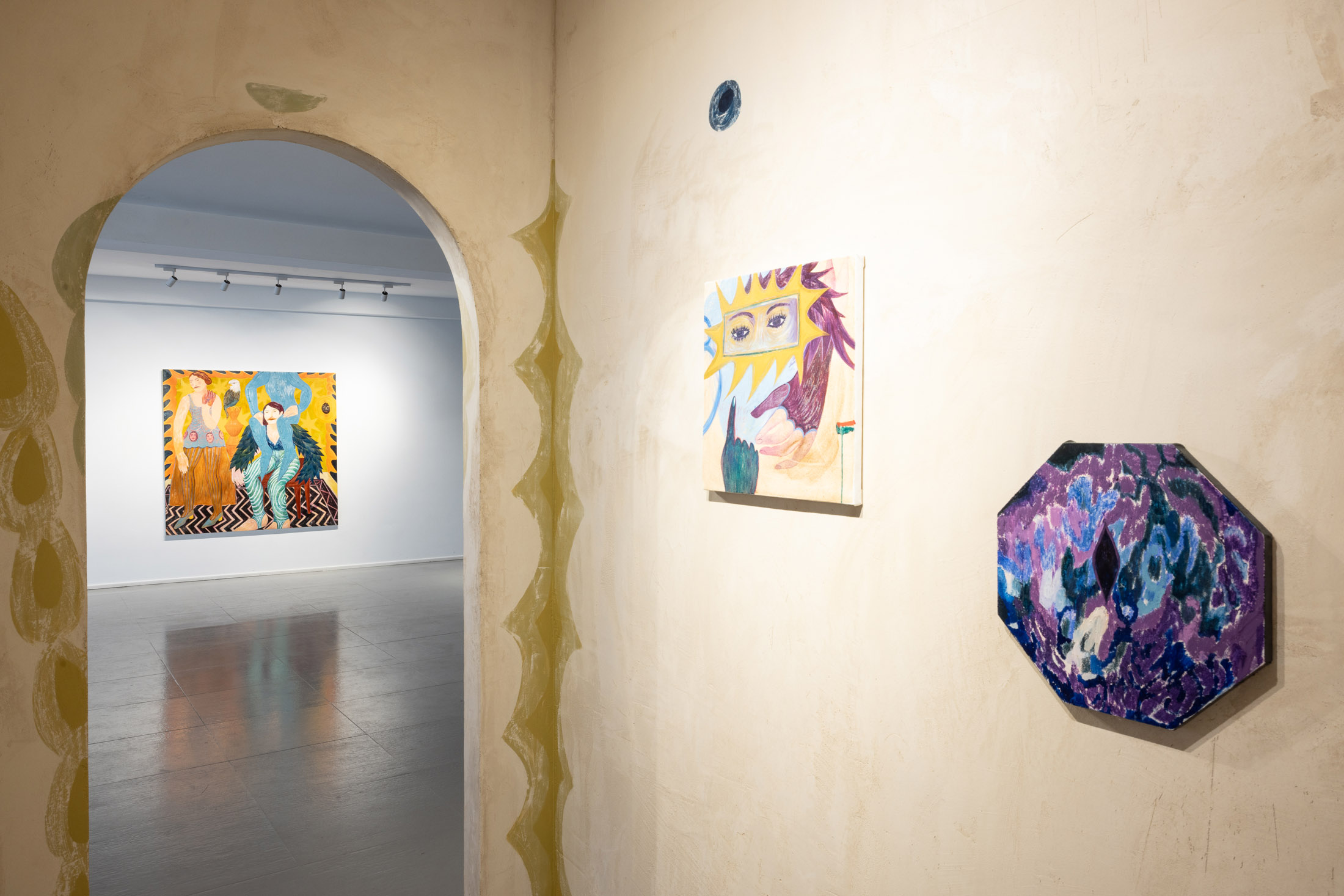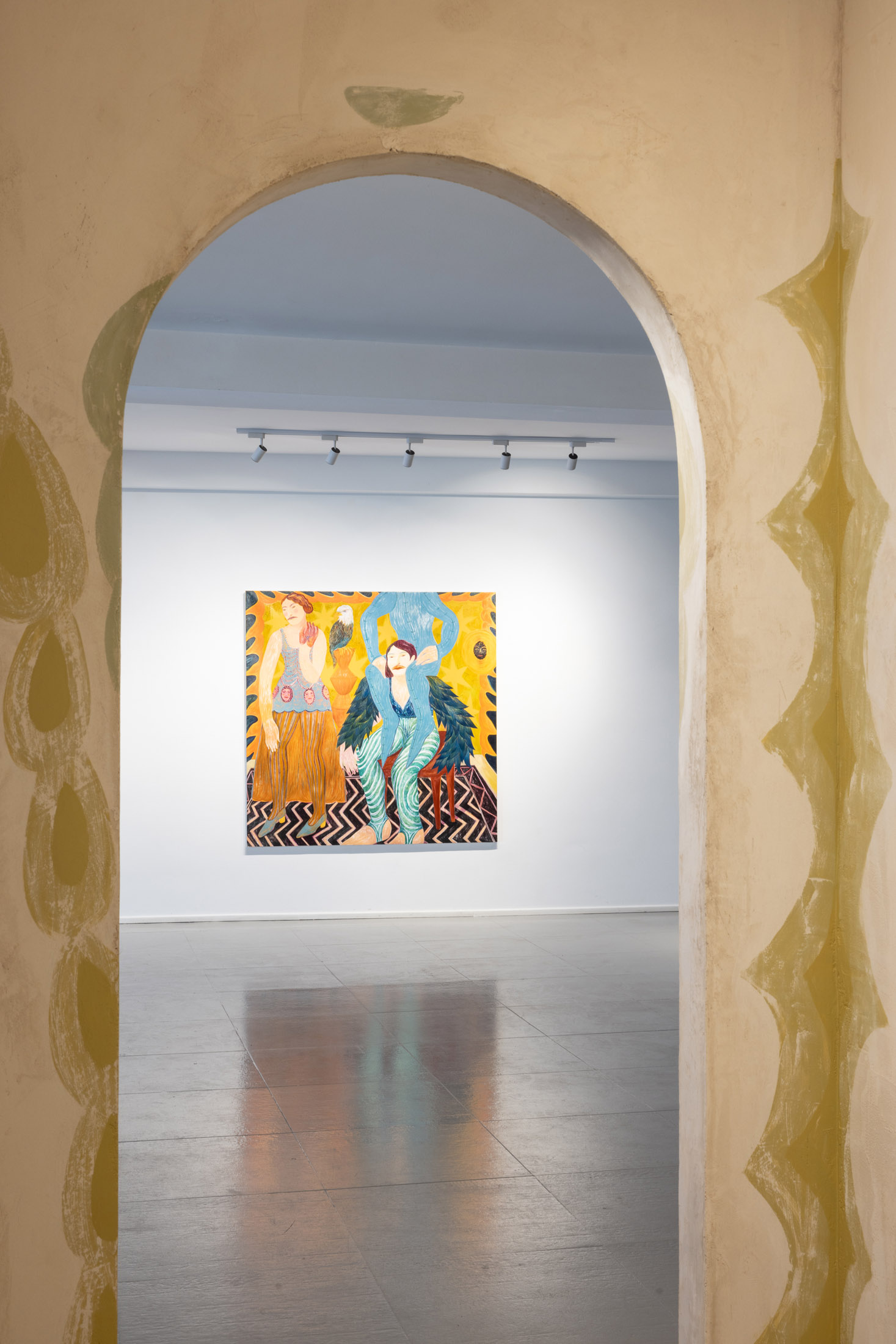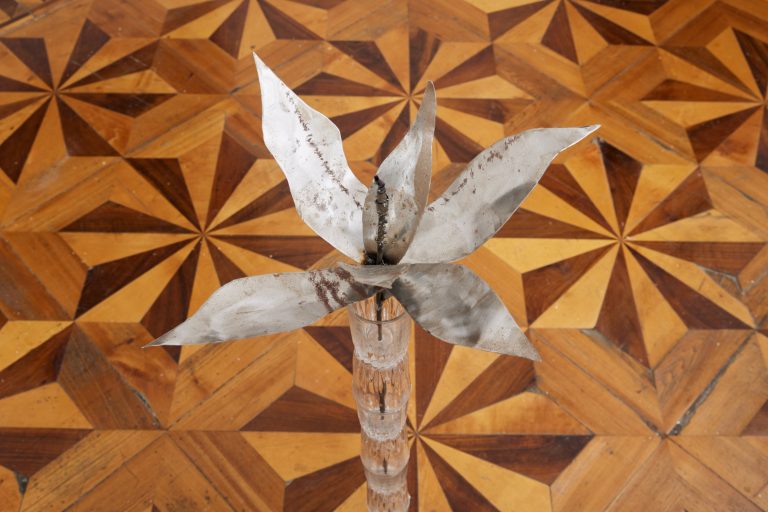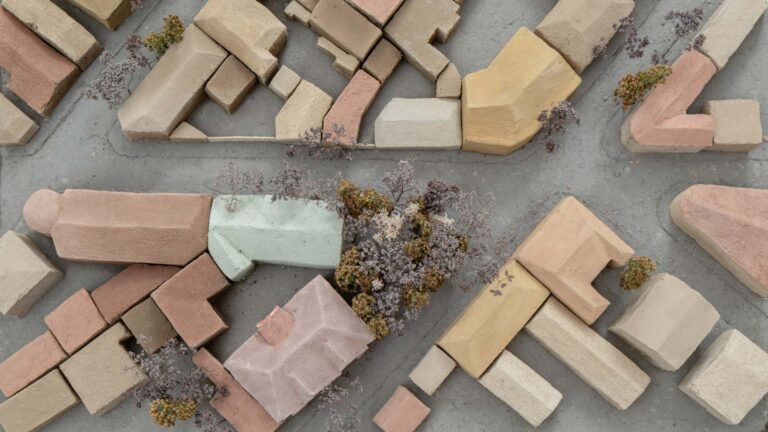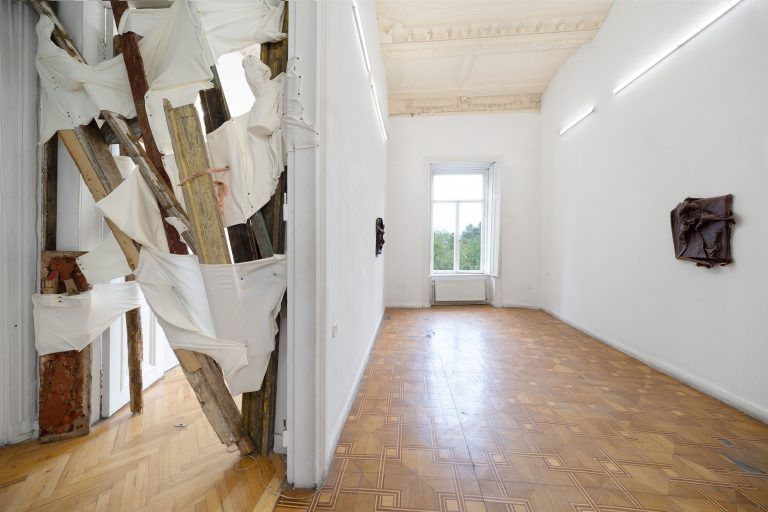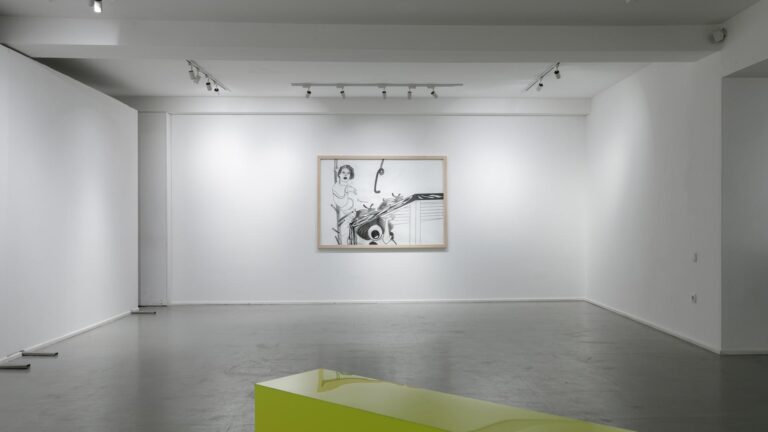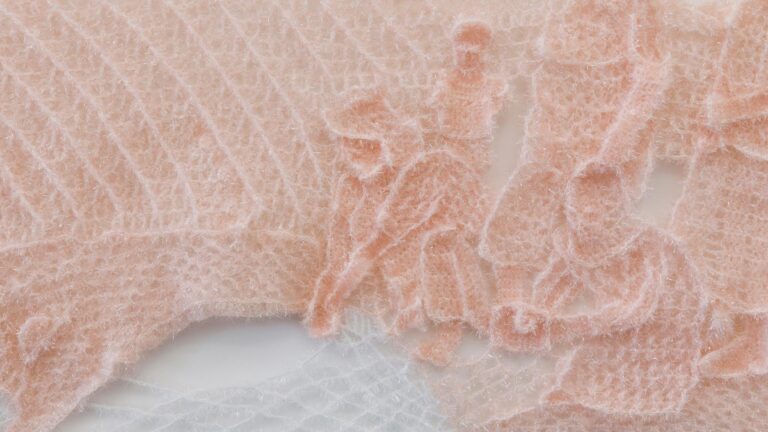Artists: Uta Bekaia and Rusudan Khizanishvili
Exhibition title: Mother Ship
Venue: Window Project, Tbilisi, Georgia
Date: January 25 – March 10, 2024
Photography: Sera Dzneladze / all images copyright and courtesy of the artists and Window Project, Tbilisi
“Out of sleeping a waking,
Out of waking a sleep;
Life death overtaking;
Deep underneath deep? “
(The Sphinx – Ralph Waldo Emerson)
The multidisciplinary exhibition “Mother Ship” by Uta Bekaia and Rusudan Khizanishvili presents a visual language study of the semiotic process of life’s origins on Earth. The natural, biological, historical and linguistic semiotic process naturally introduces the discourse of ecofeminism, where a woman is considered a sacred organism of the origin of life, as a mother, inseparably connected with mother nature and with the process of life circulation, at the same time women experience the same challenges in the present as the mother nature. The Earth is considered a planet where life circulation takes place and human civilization develops; in this regard, the exhibition explores the importance of the patterns of time; the research is driven out from the time dimension by simulating the spaceship, which has left the dimension of time and has reached the void. The visual artefacts presented on the simulated ship are messages sent from the present, which tell us about the life of civilizations on Earth, their origins, the role of a mother language and existential challenges.
The first part of The Mother Ship explores the biological origins of life, which, on the one hand, carries a sacred meaning and is a symbol of life circulation; on the other hand, the civilization’s choice leads to the destruction process. Thus, artworks partly reflect the artefacts of the past.
The second part explores linguistic and visual memory of a semiotic process on Mother Earth, which is inseparably linked with the mysticism and the research of a living thought. With this discourse, the exhibition explores the challenges of contemporary anthropology through the visual language and reflects the references of anthropology – beyond the human1, where life and thought are things of the same order and are considered as “living thought.” Therefore, the world can no longer be perceived as a place dominated by human thought; human thought becomes only a part of the whole planet’s living thought, continuously generated and interdependent with symbolic, indexical and iconic signs2. Such a planet is perceived as a mystical, enchanted place where humans and the rest of the living world perform the transcendental function of reflecting the living thought. The reflection of the thought interlinks with the generating of symbolic forms; one of the forms is language and writing, which is also constant, though it carries a memory as well as the origin of life associated with sacred female forms, which repeats the transmission of life through generations and also changes with the living thought. In reference to the linguistics and the dimension of time, at the exhibition, AI tells poems, spells and phrases about the artefacts presented at the Mother Ship that have reached the void, which brings the viewer back to the living thought from the perspective of the void and makes to rethink the ways of its transformation.
-Tamuna Arshba
[1] Eduardo Kohn “How Forests Think _ Toward an Anthropology Beyond The Human” 2013
[2] “How Forests Think” – The new is generated by the continuity, pg. 87; Eduardo Kohn

